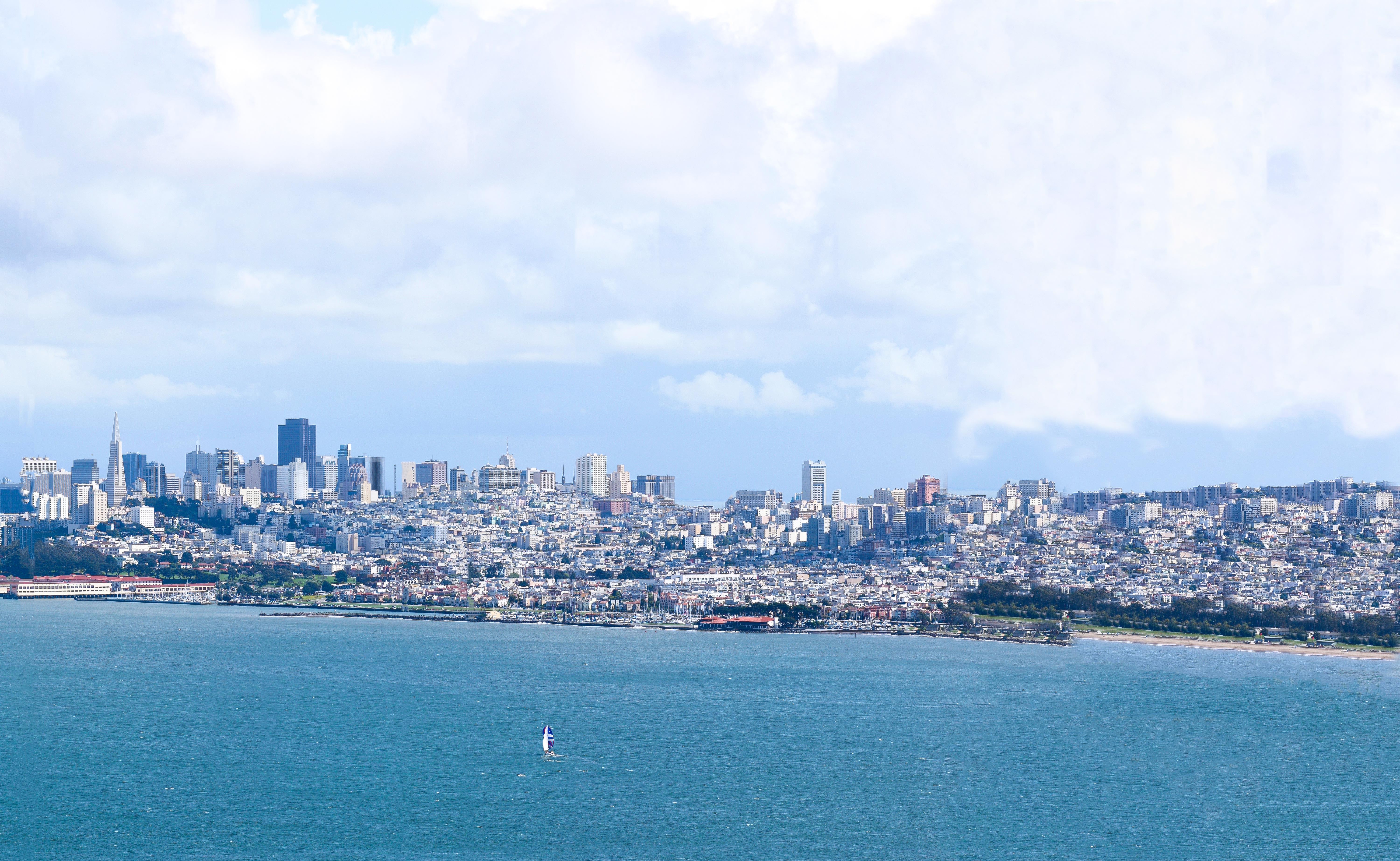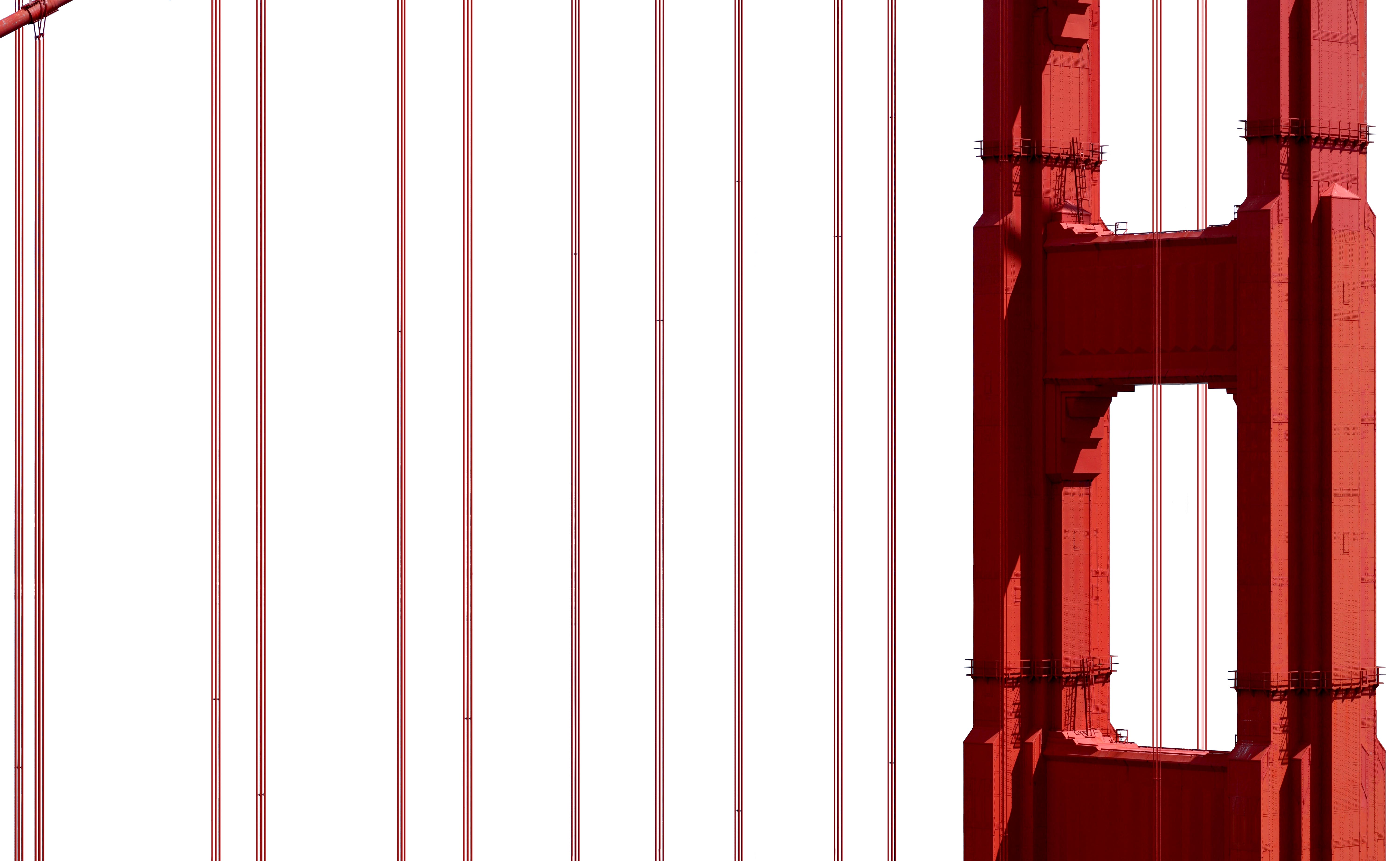The Golden Gate Bridge
San Francisco is a record holder in terms of the number of recognizable symbols.
The winding Lombard Street, colorful wooden houses, cable cars rolling along steep streets, Alcatraz prison where Al Capone himself was imprisoned. And also hippies, the Gold Rush, Silicon Valley, and of course, the Arsenal building where excellent BDSM pornography is filmed. This city has it all.
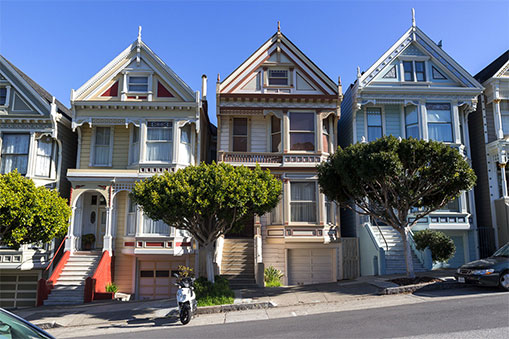
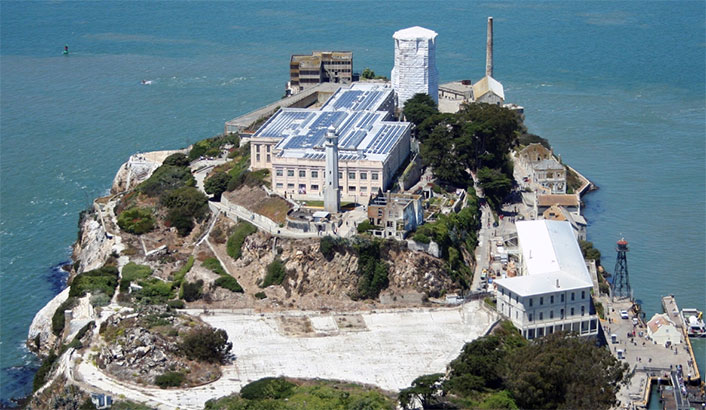
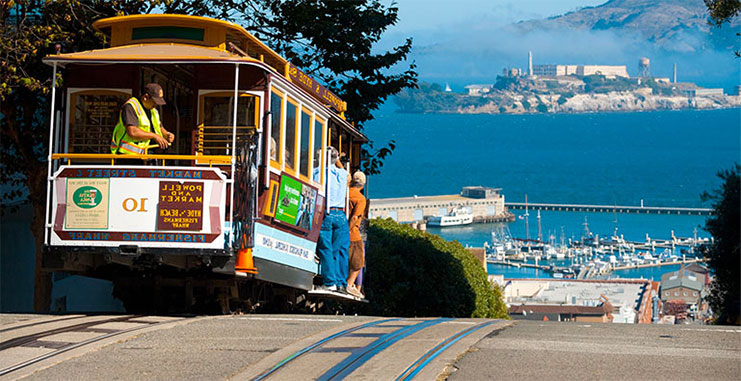
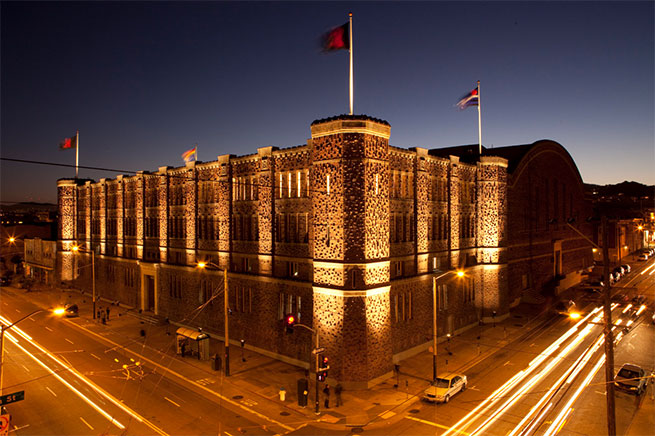
Nevertheless, the most recognizable symbol of San Francisco is the giant Golden Gate Bridge, the “Golden Gates,” which connects two parts of California across the eponymous bay.
Everyone has seen this bridge. Nowadays, it’s impossible to imagine San Francisco without the Golden Gate, even though it was only opened in 1937. Half a year earlier, the second bridge, the Bay Bridge, was also opened. Before that moment, getting from San Francisco to neighboring cities Oakland and Sacramento could only be done by ferry or by making a detour of 150 kilometers around the entire bay.
San Francisco would have never become an economic center of the planet if it weren’t for an entire system of bridges connecting it to the mainland.
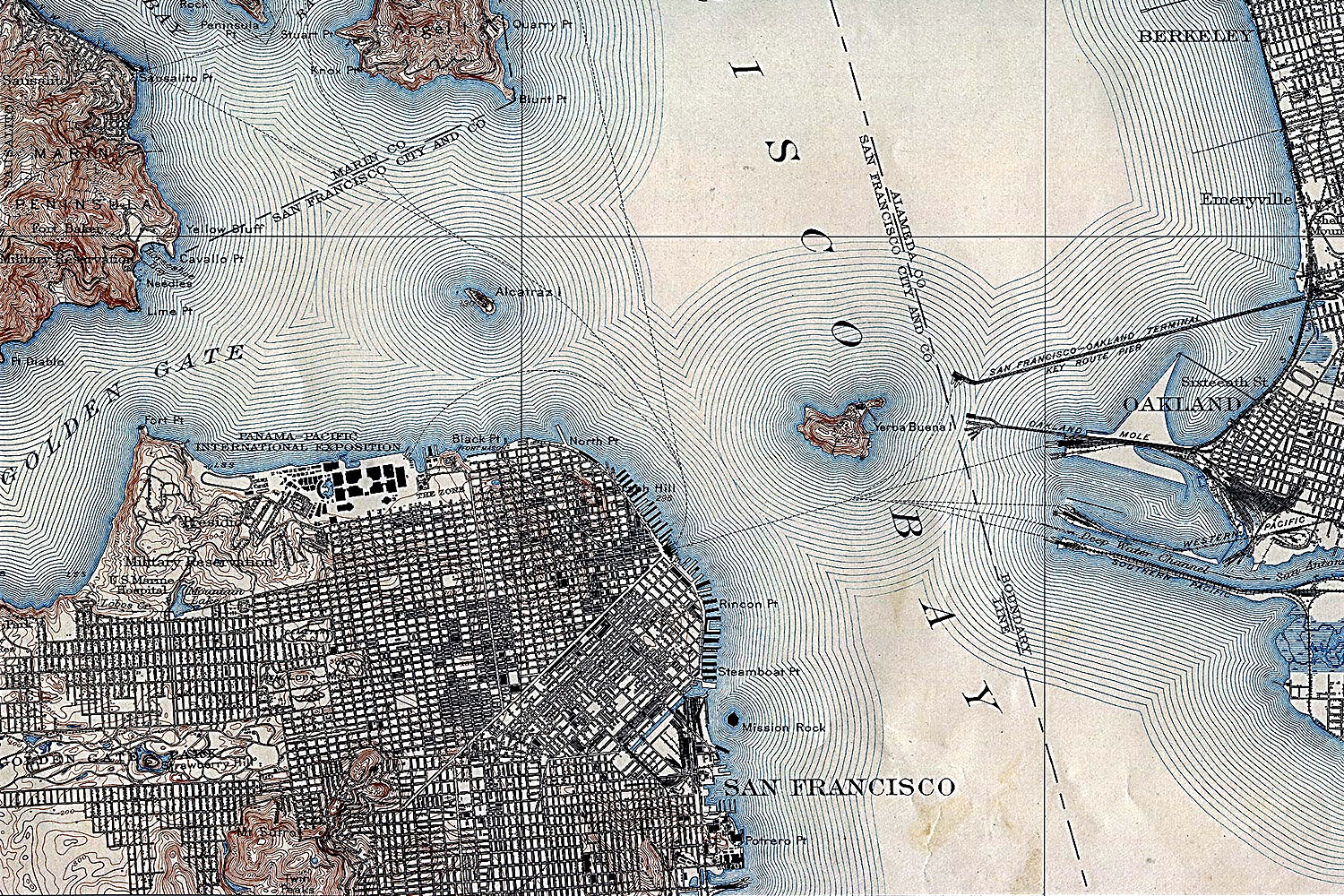
⁂
Joseph Strauss, famous for his project of a bridge across the Bering Strait, became the chief engineer of the Golden Gate. Initially, Strauss proposed a completely different design for the bridge. The Golden Gate could have become a completely outdated cantilever bridge if the authorities of San Francisco hadn’t compelled Strauss to make it a warm and elegant suspension bridge.

By the way, the design of the Golden Gate Bridge began as early as 1916, but construction didn’t start until 1933.
The cause, as always, were the Russian hackers communists who insisted that the bridge be built by local workers. Those against the bridge included ferry owners who feared losing their business and the military department, which was concerned about obstacles for ships.
When the ferry operators were boycotted, the bridge design was altered to meet the demands of the unions. Then the Great Depression struck.
In the end, funds were scraped together from the entire Golden State, a couple of skilled engineers were assigned to Strauss, and construction of the bridge began. By the way, one of the consultants was Latvian engineer Leon Moiseev. He developed a theory of “flexural oscillations” for long bridges, which was first applied in the Golden Gate. According to this theory, the longer the bridge, the more it can sway in the wind, reducing load fluctuations on the cables.
Apparently, Moiseev was fortunate with the Golden Gate because later his theory of flexural oscillations caused the famous Tacoma Narrows Bridge to bend to such an extent that it tore apart. Moreover, it tore apart in such a horrifying manner that many who have seen the footage still believe it to be some kind of video montage. However, it is actually the result of specific torsional oscillations caused by miscalculations of wind loads.
Nevertheless, the Golden Gate was built, and it was done in 4 years. Interestingly, they even managed to save on construction costs. The initial budget was $35 million, but in the end, it came out $1.3 million cheaper. Reader, could you remind me of the current budget for the Kerch Strait Bridge?
The footage from the construction of the Golden Gate looks fantastic.
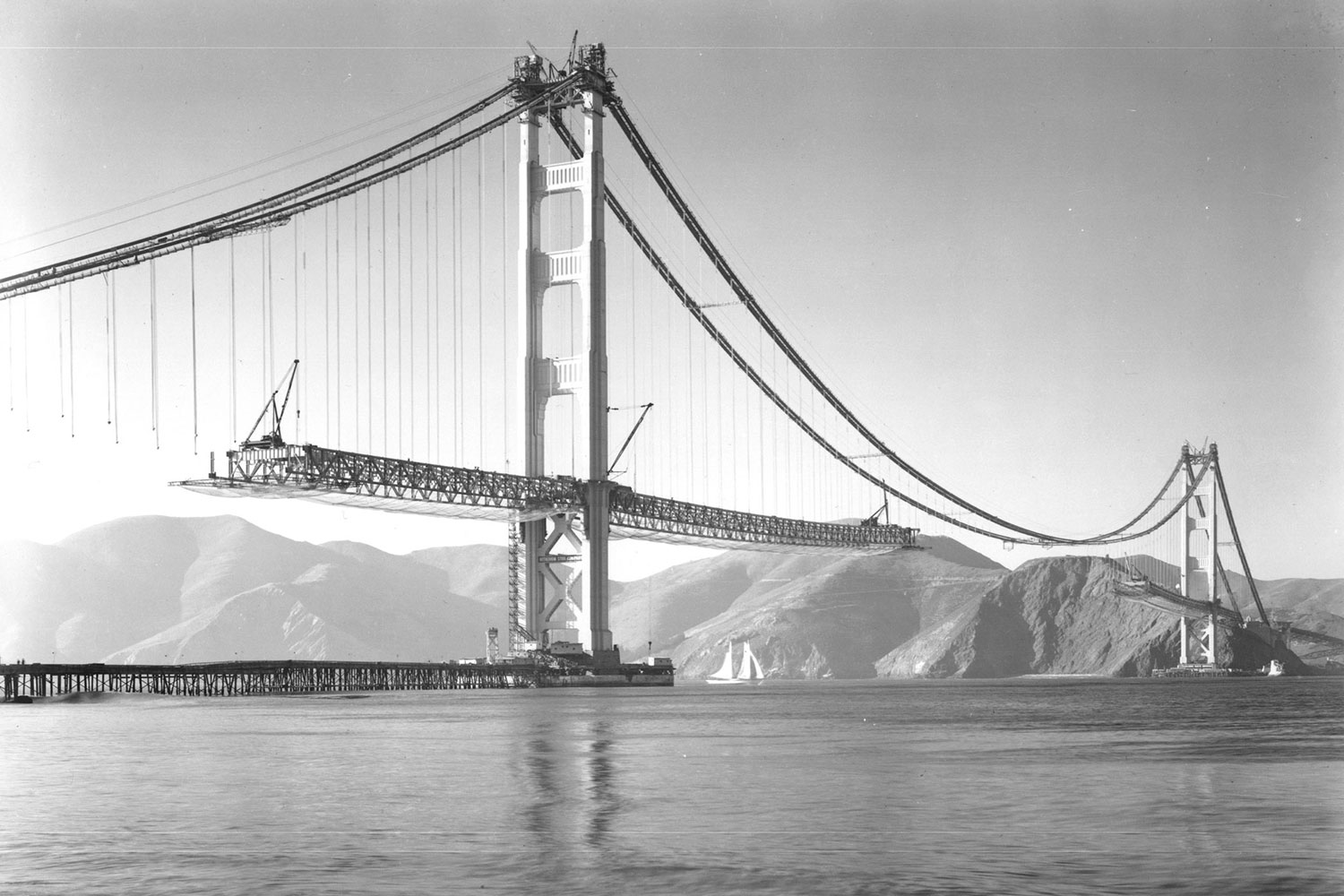
It’s like some otherworldly landscape. Or “War of the Worlds.”
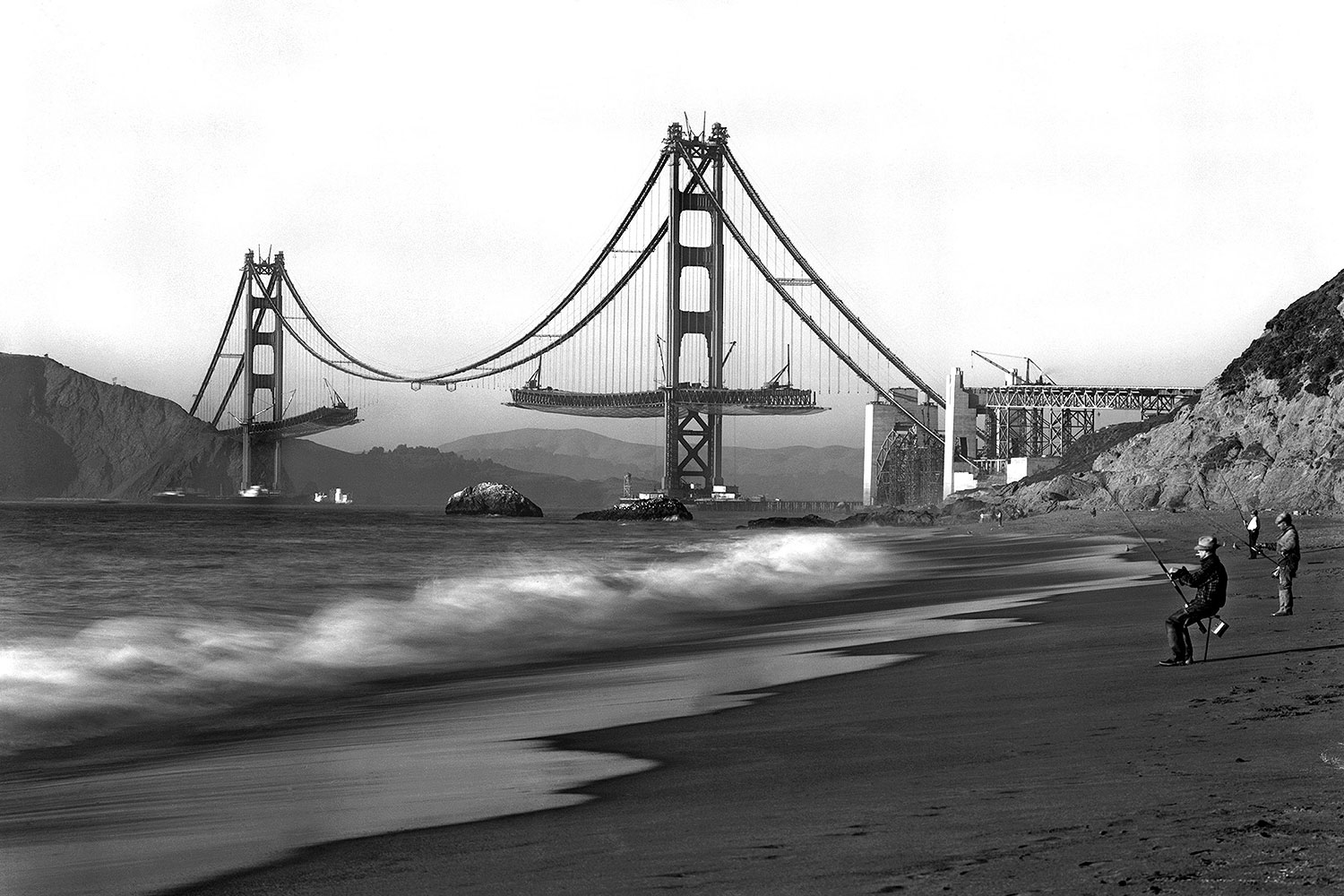
Yes, they worked with minimal insurance back then. They often had tea and hamburgers sitting on the girders. During the construction of the bridge, several dozen workers fell into the bay and died.
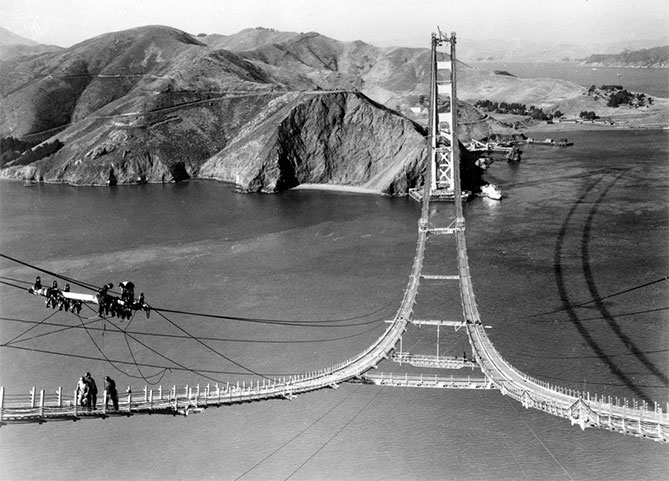
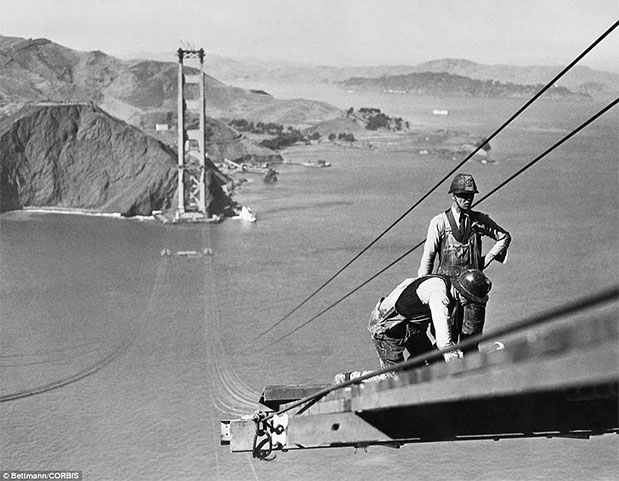
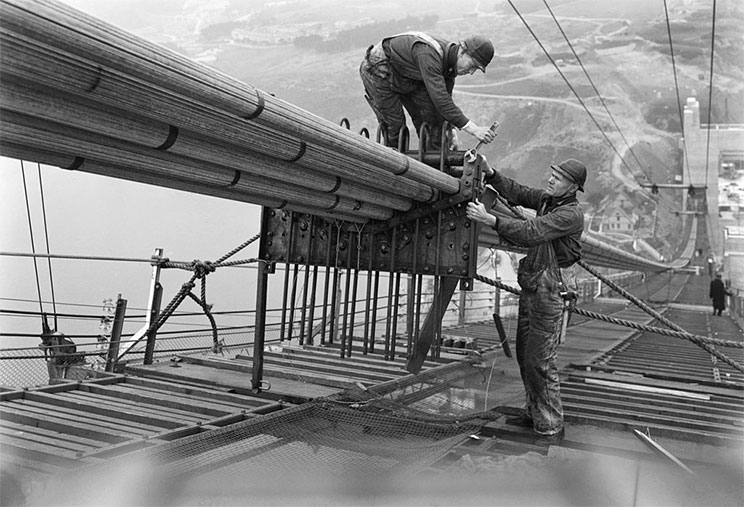
Simultaneously with the Golden Gate, another bridge was being constructed in San Francisco, leading to the city of Oakland. It’s called the Bay Bridge and was completed six months before the Golden Gate. However, the second bridge is not particularly remarkable.

Perhaps, if it weren’t for the red-orange color, the Golden Gate would have never become the most beautiful bridge in the world. This color is known as International Orange. American astronauts’ space suits are also painted in the same color.
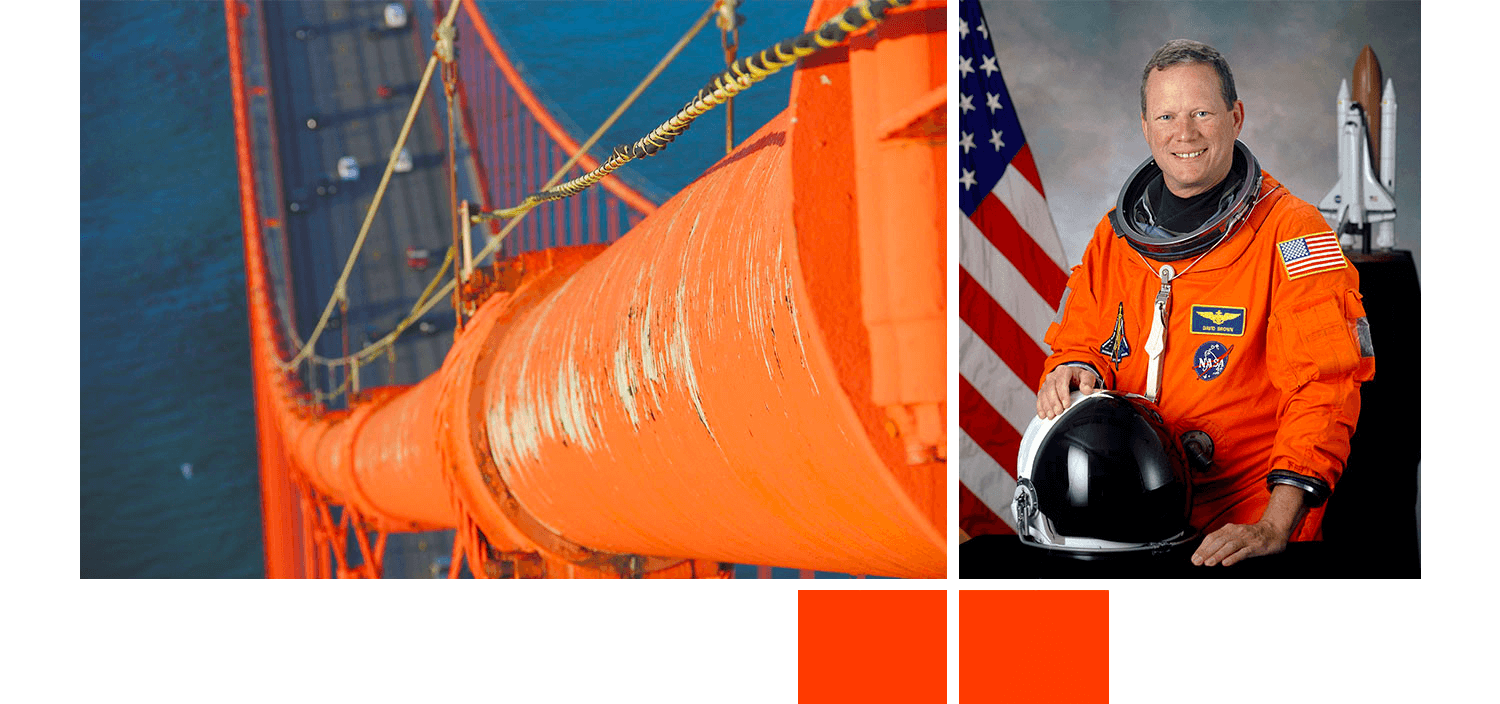
Golden Gate is most beautiful at dawn. The sun rises beyond San Francisco.

The bridge is illuminated only half an hour after sunrise, and at dawn it fades into red the most. Throughout the day, Golden Gate will gradually turn orange.
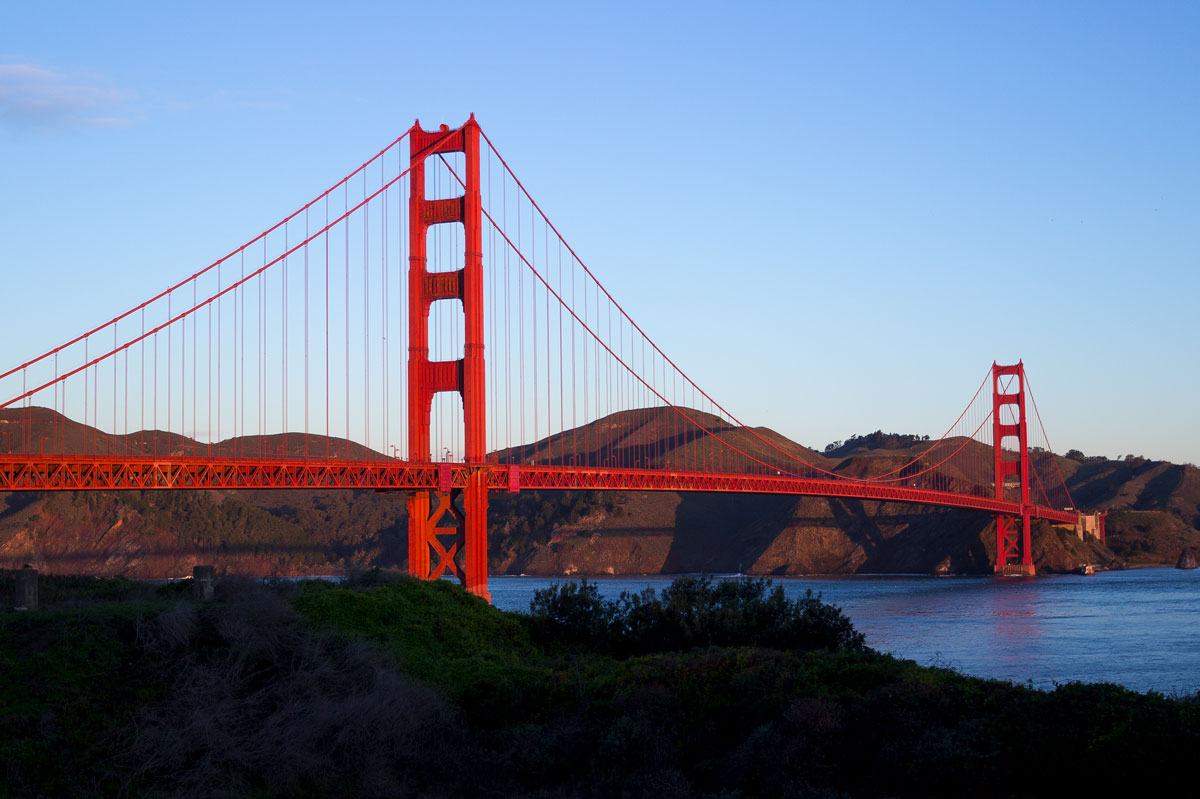
Golden Gate can be captured from a million different angles, and it will always be uniquely special. The bridge is surrounded by a whole system of parks, pathways, shoreline, and piers where one can endlessly stroll and choose the best vantage point for filming.

Local fishermen are on duty at the pier from early morning.
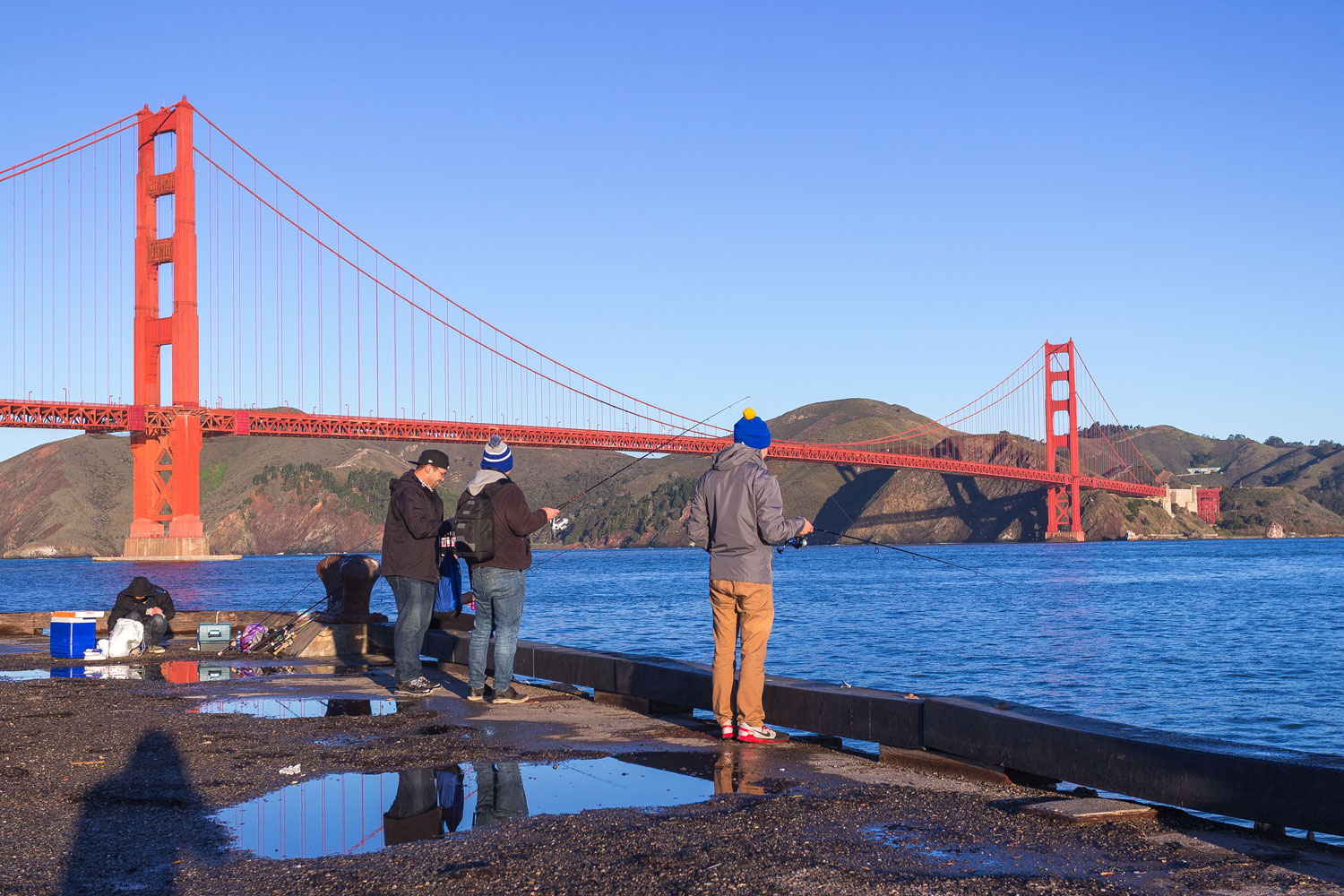
The morning at Golden Gate is indescribable.
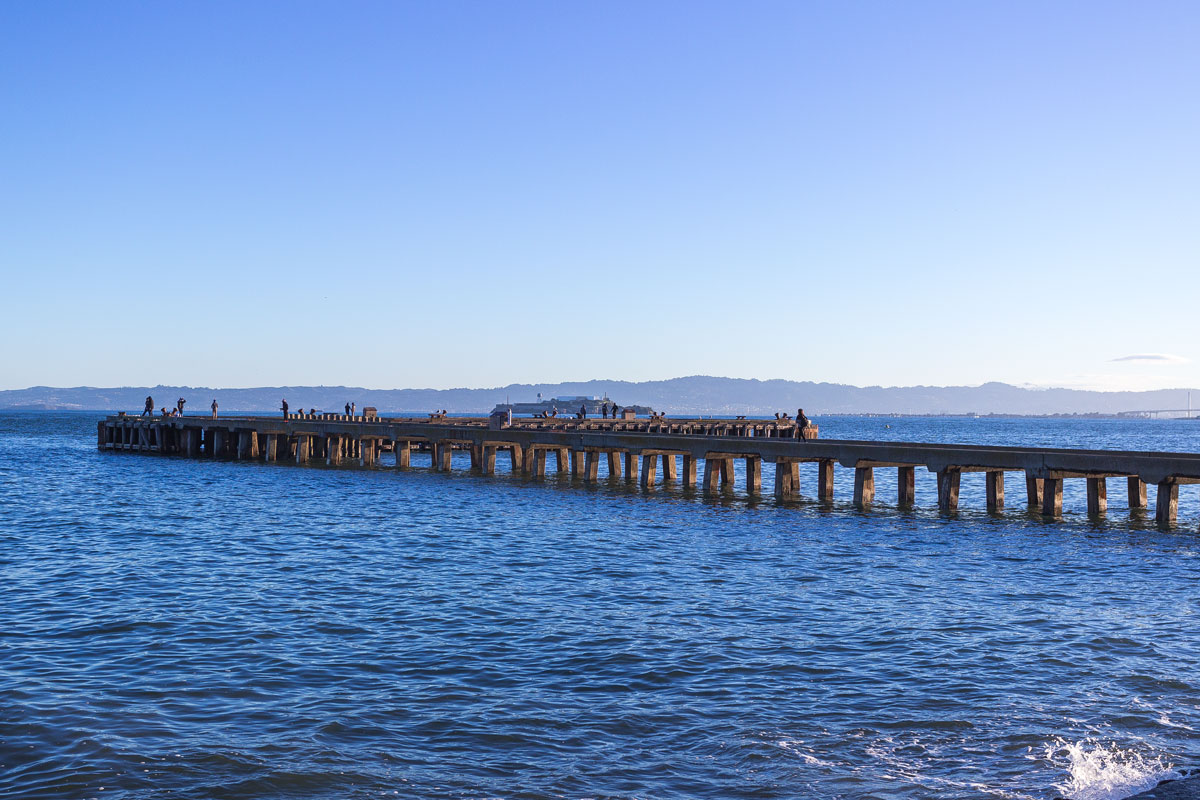
Gradually, the bridge loses its morning redness and becomes more orange.
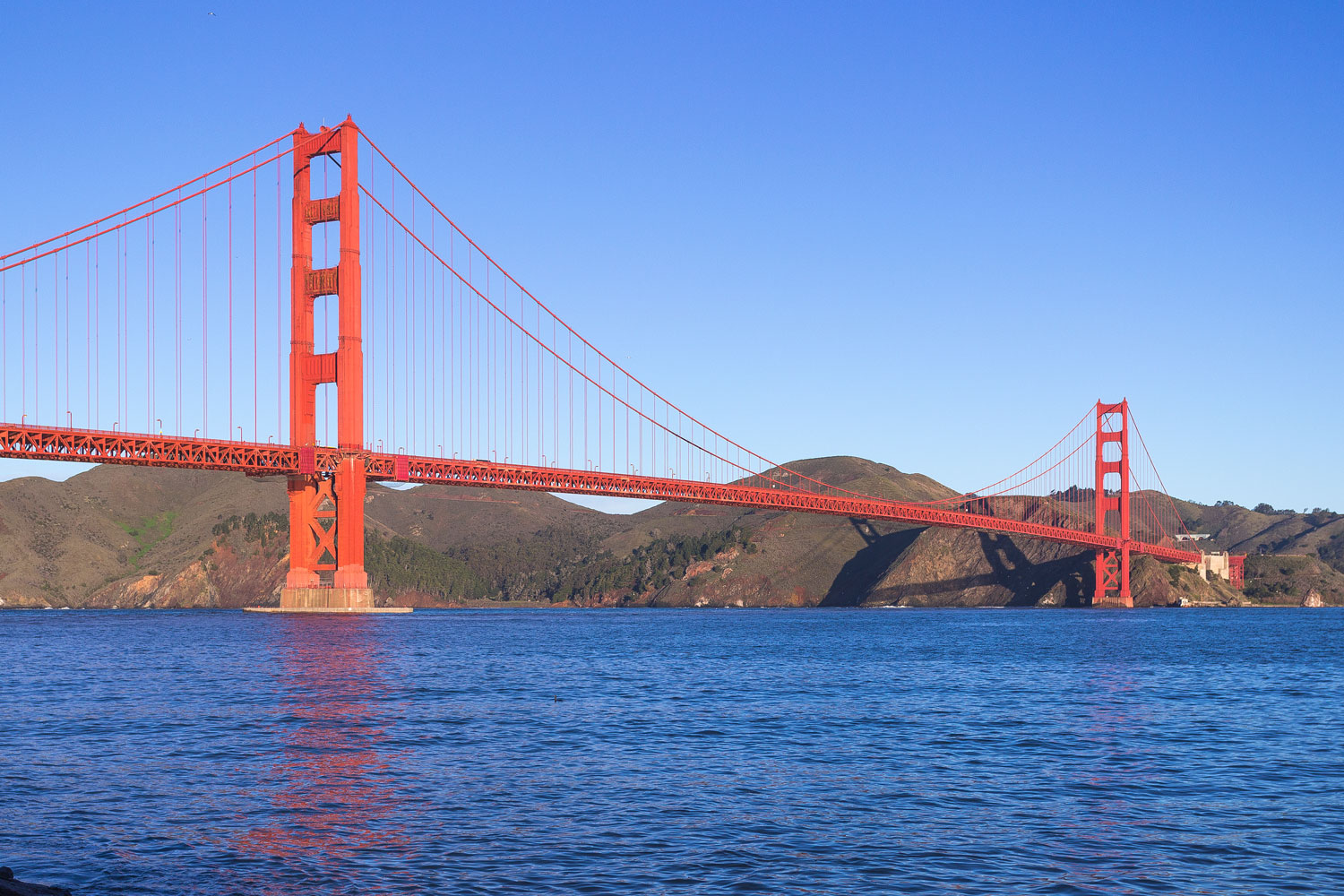
The shoreline leads to the base of Golden Gate.
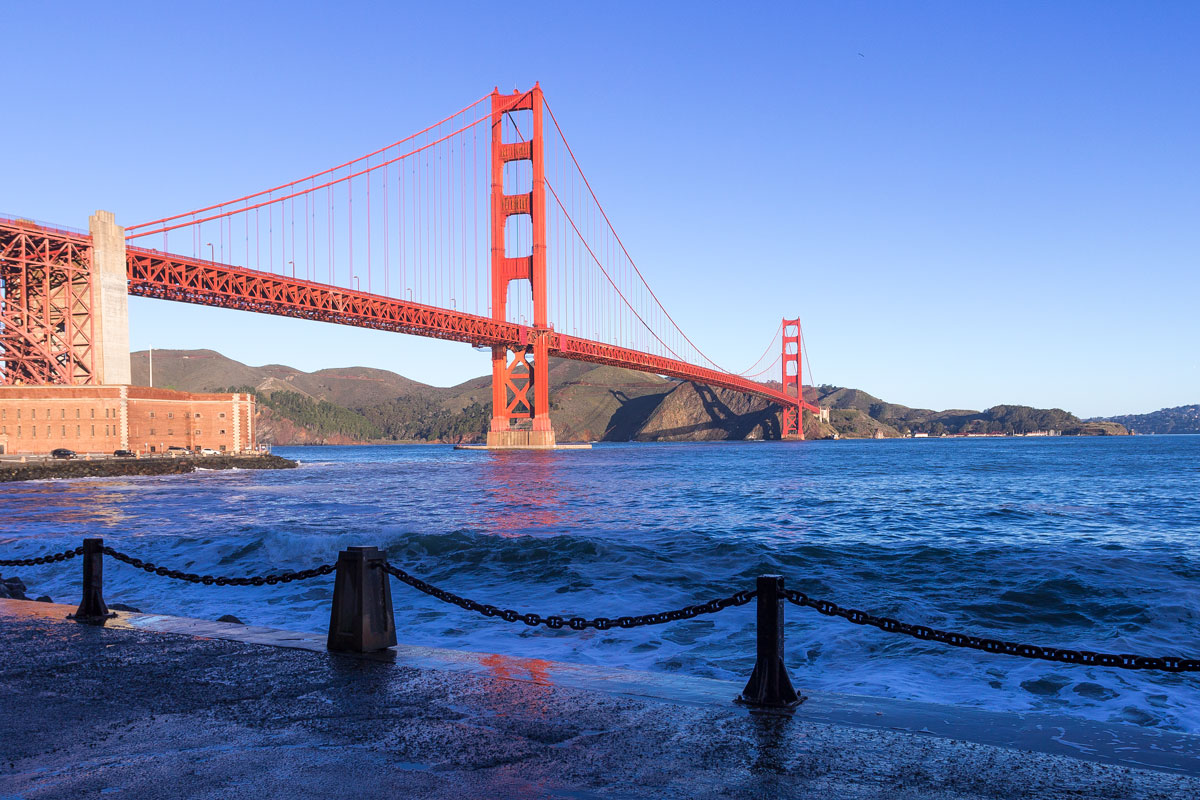
The most important thing here is not to get caught in the mess: waves sometimes flood the entire road.
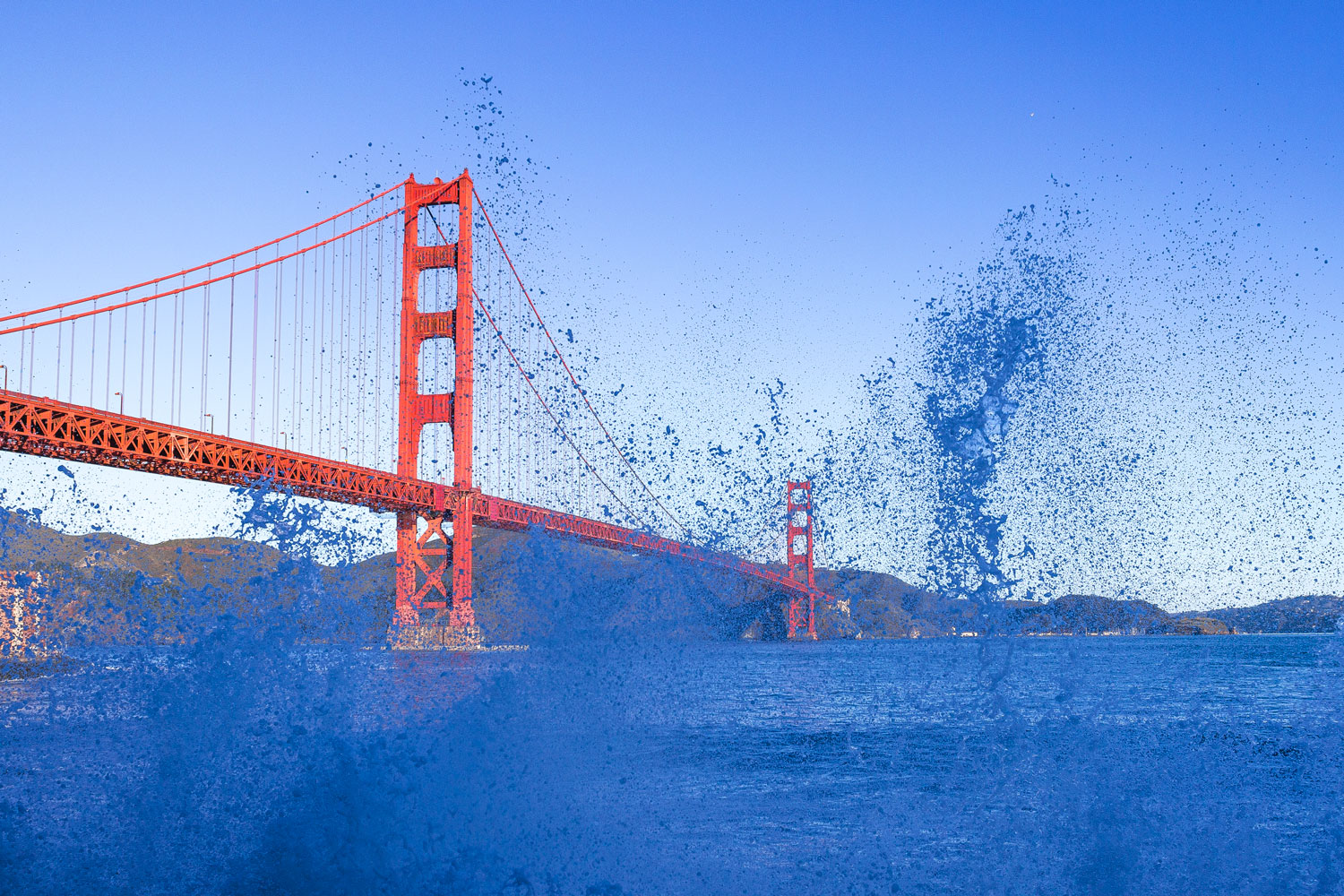
You can approach Golden Gate very closely.
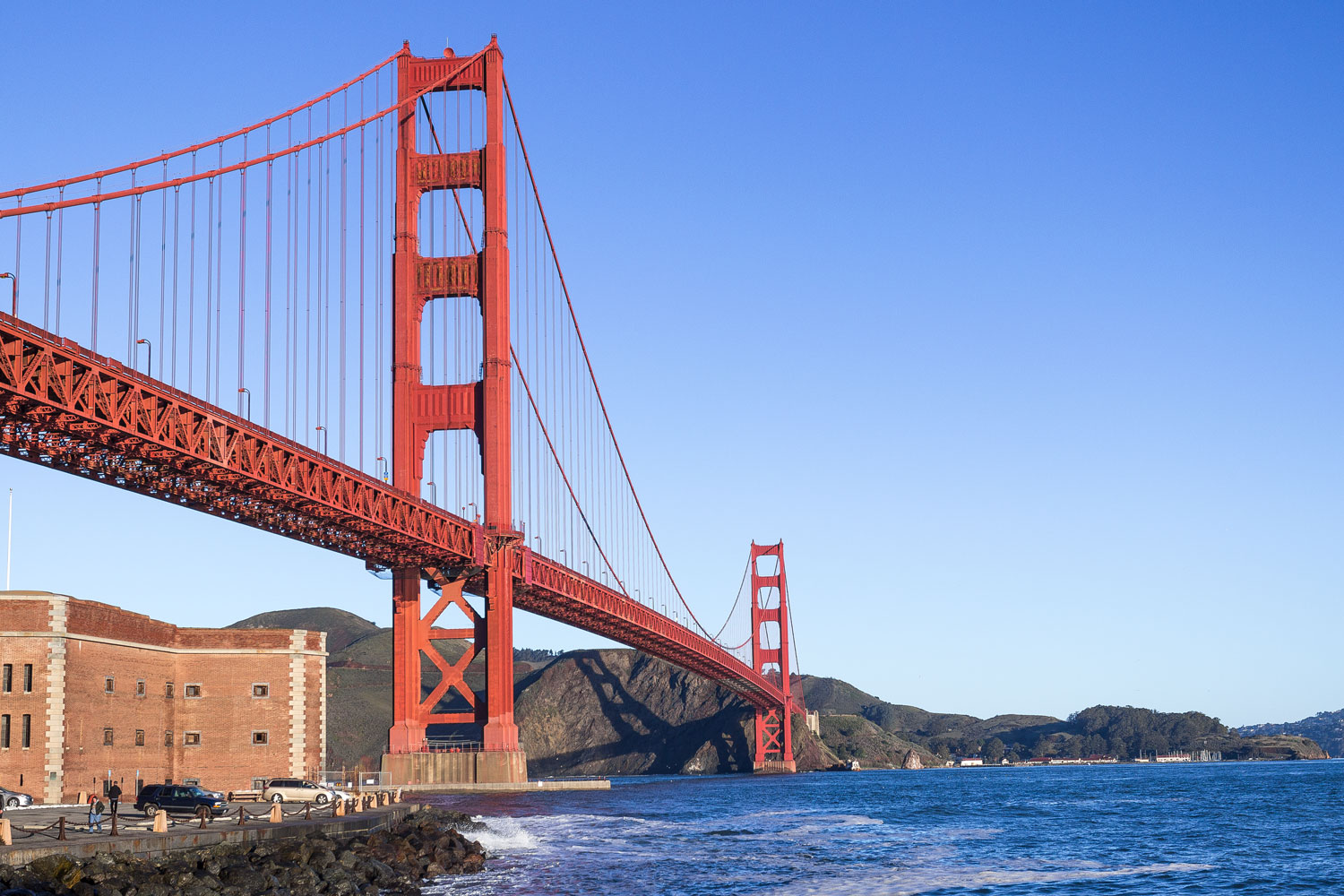
At the base of the bridge stands an old brick building. It is a historic fort, built even before the Civil War to protect San Francisco from threats at sea.

When the bridge was being constructed, Strauss specifically took into account not to destroy the historic fort. In the past, tours were conducted here, but now it seems that the fortress has been completely abandoned.
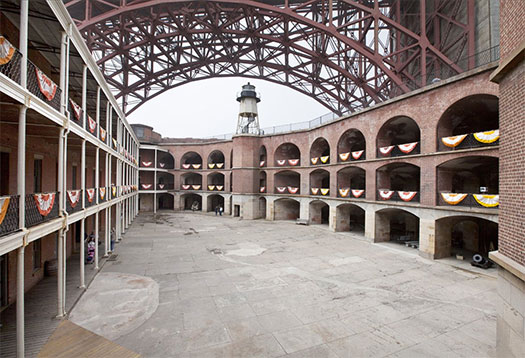
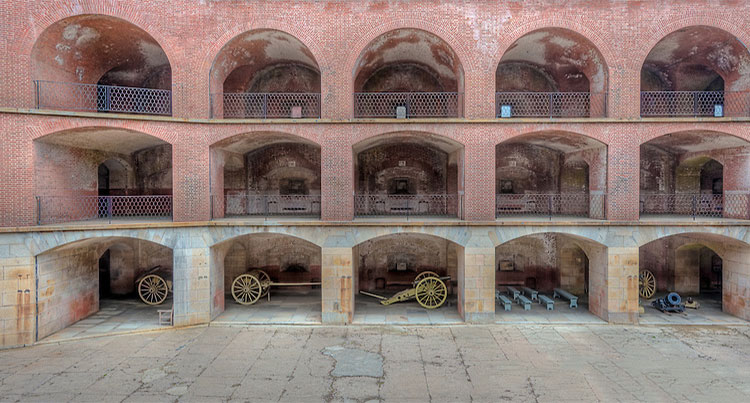
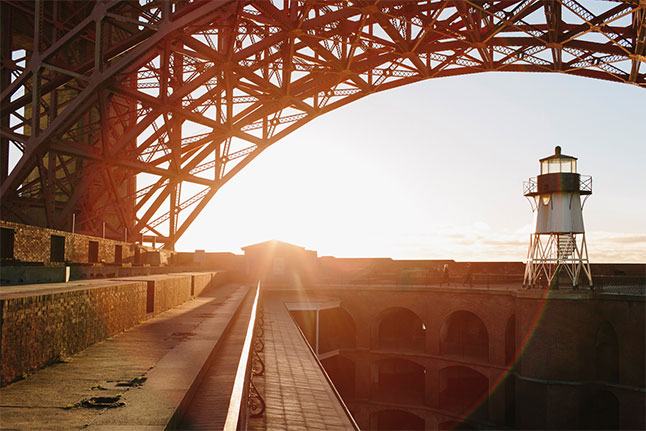
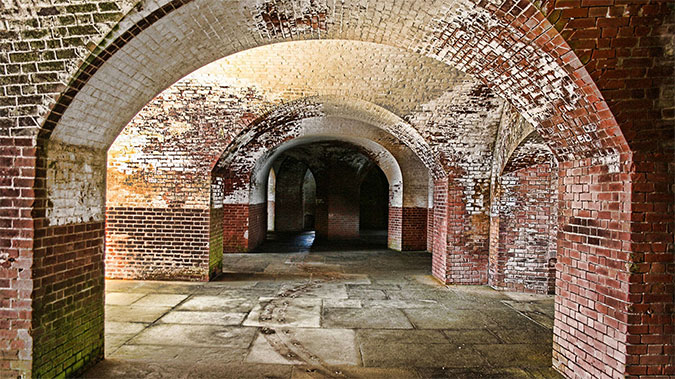
The fort is surrounded by a mesh fence along its entire perimeter. There are various design warnings posted on the fence. However, local teenagers climb in here just like we used to explore construction sites in the 90s.
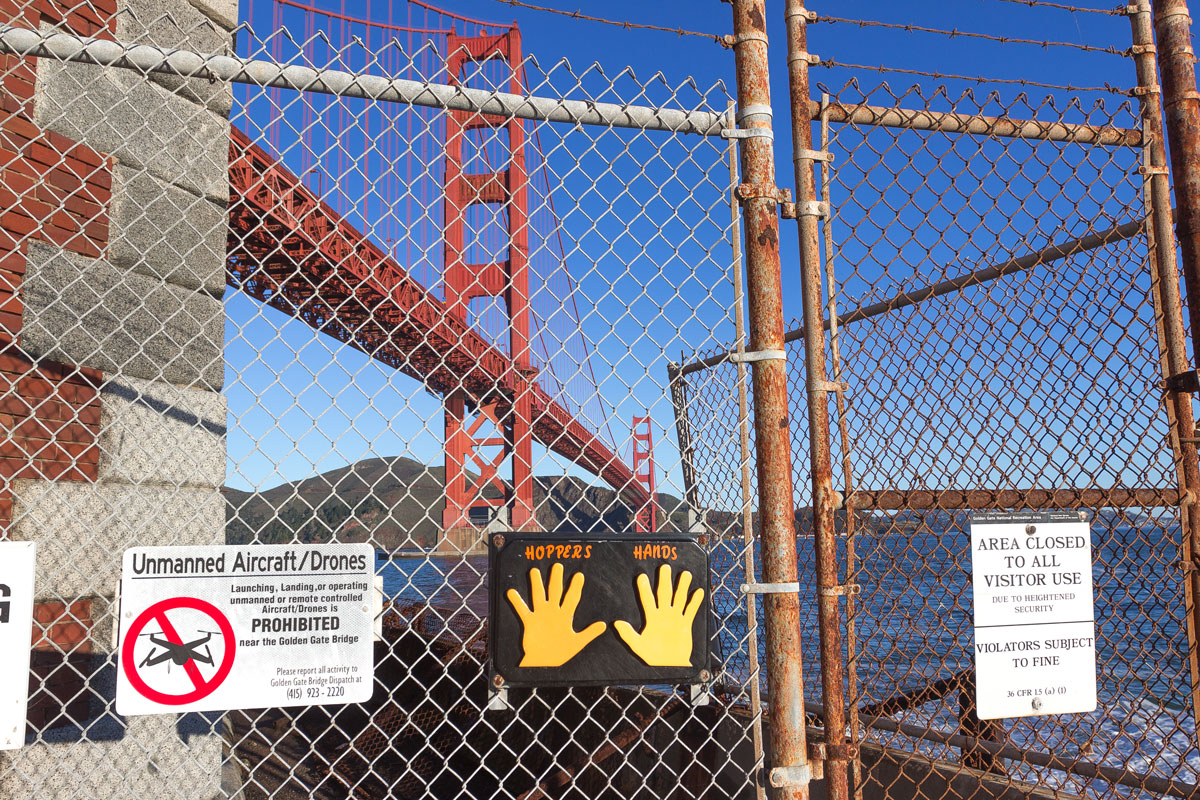
A special hole with a signage allowing passage for cats is made in the fence. God bless America.
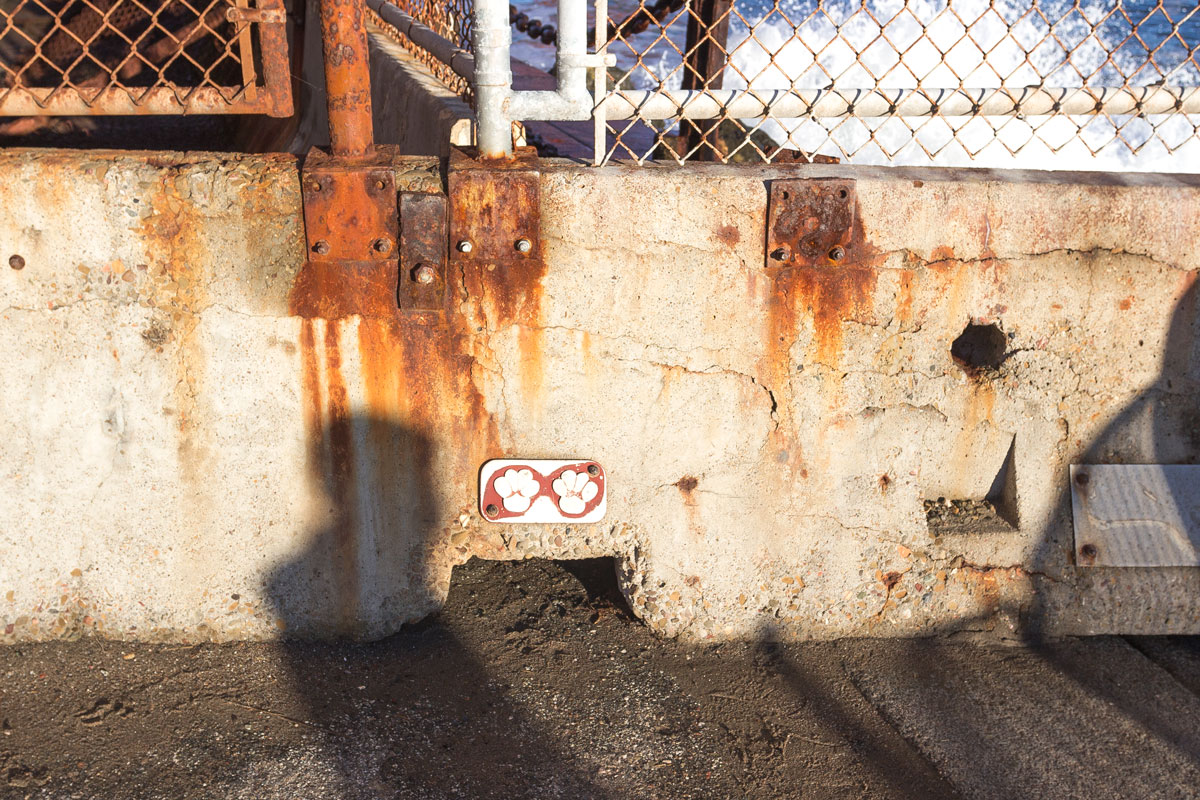
Golden Gate is a titan among titans.
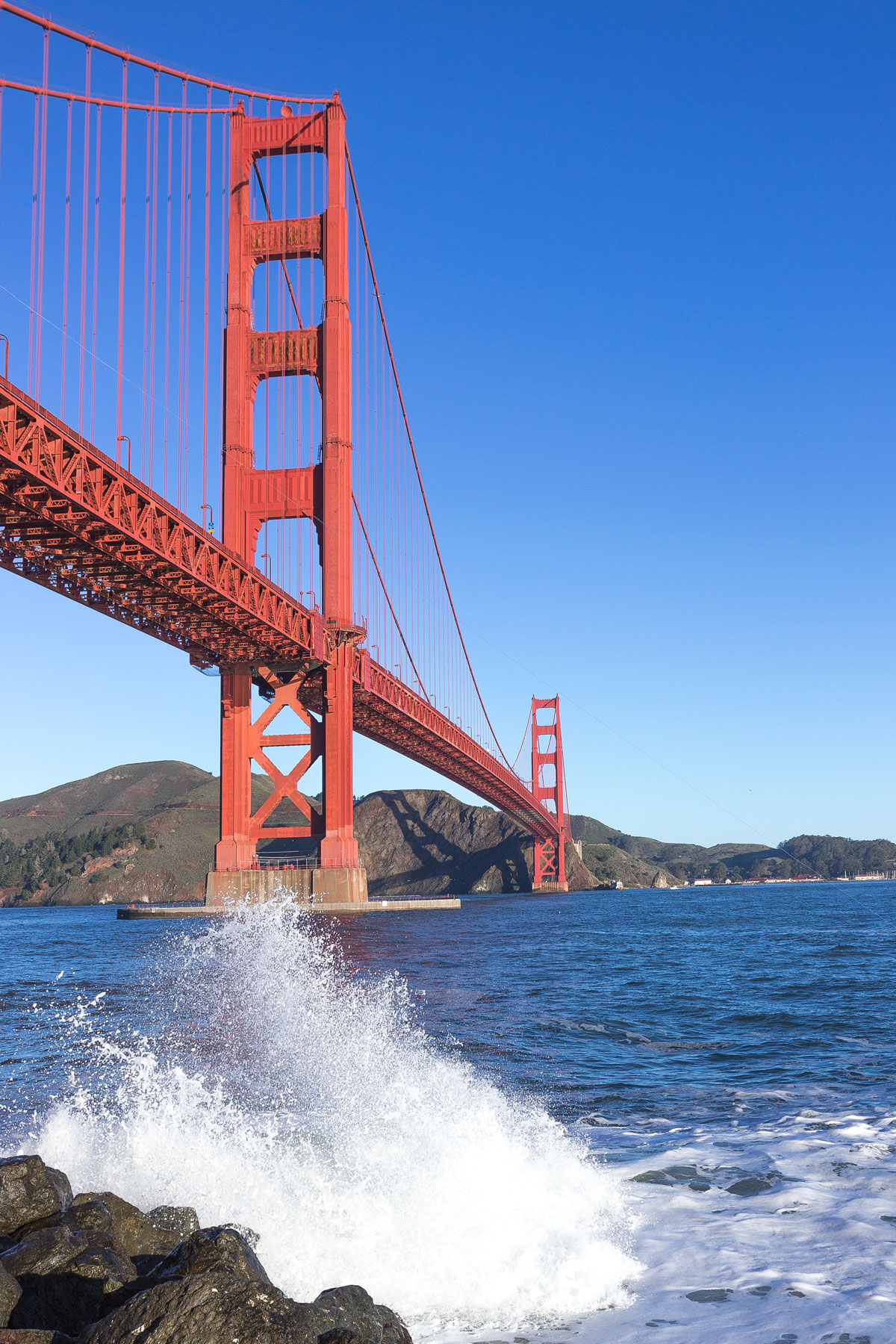
It’s not just a bridge, it’s Plato’s transcendental idea of a bridge.
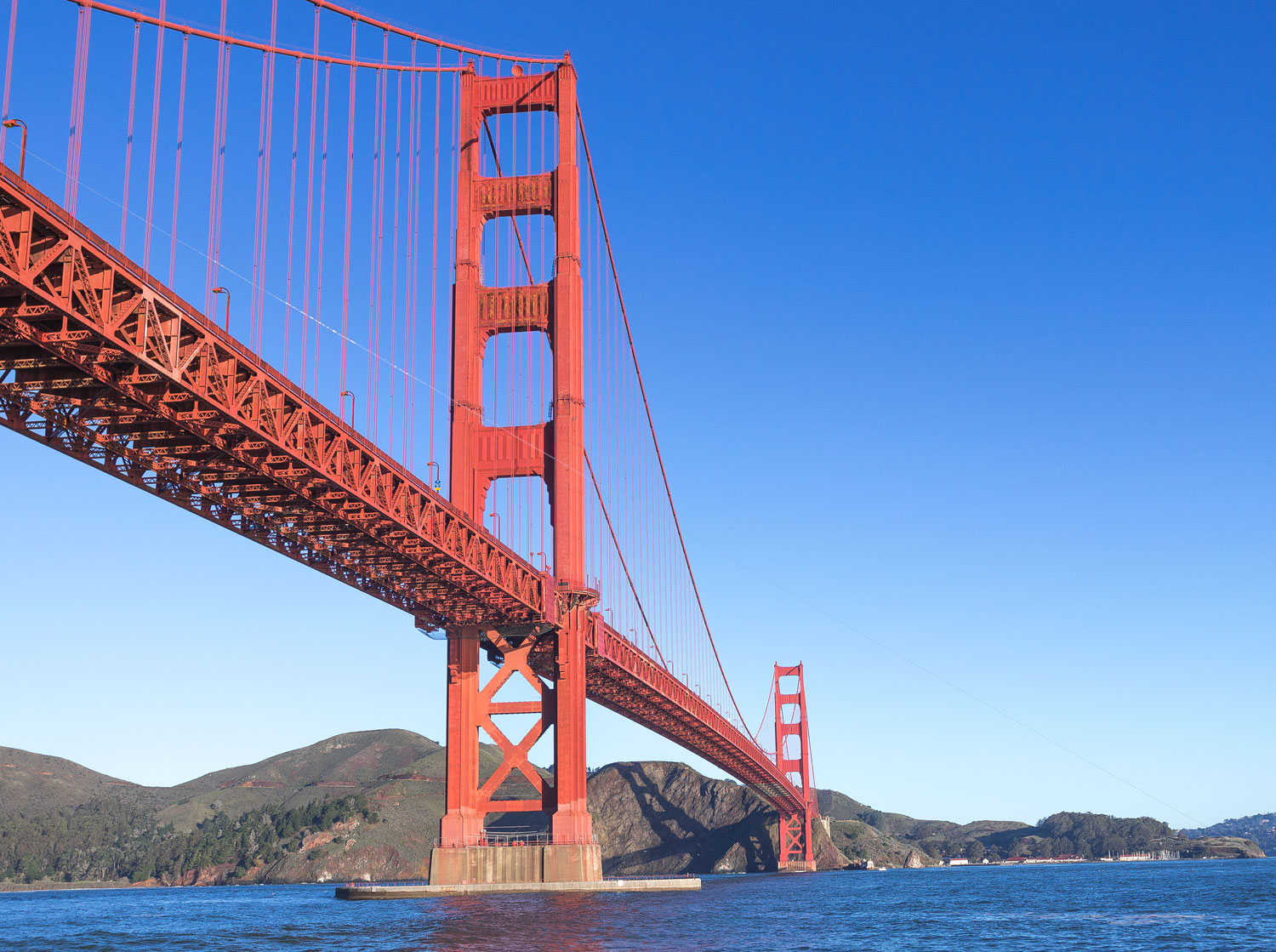
Another frame of morning freshness. The island in the distance is Alcatraz Prison.
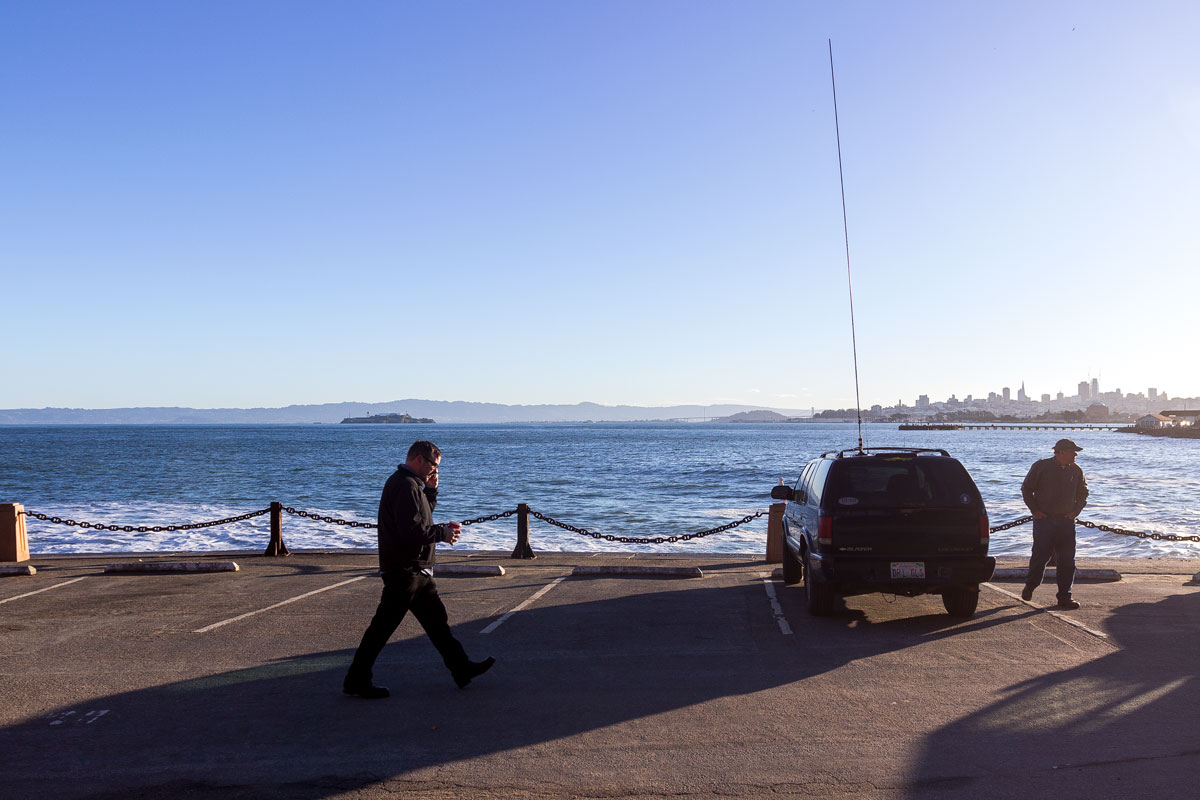
Golden Gate doesn’t immediately lead into the residential part of San Francisco, but first takes you to the vast Presidio Park. It’s part of a huge natural area that is maintained in astonishing cleanliness. Even wild animals roam here. Right at the foot of San Francisco is the technological hub of the planet!

Most often, Golden Gate is photographed from here.
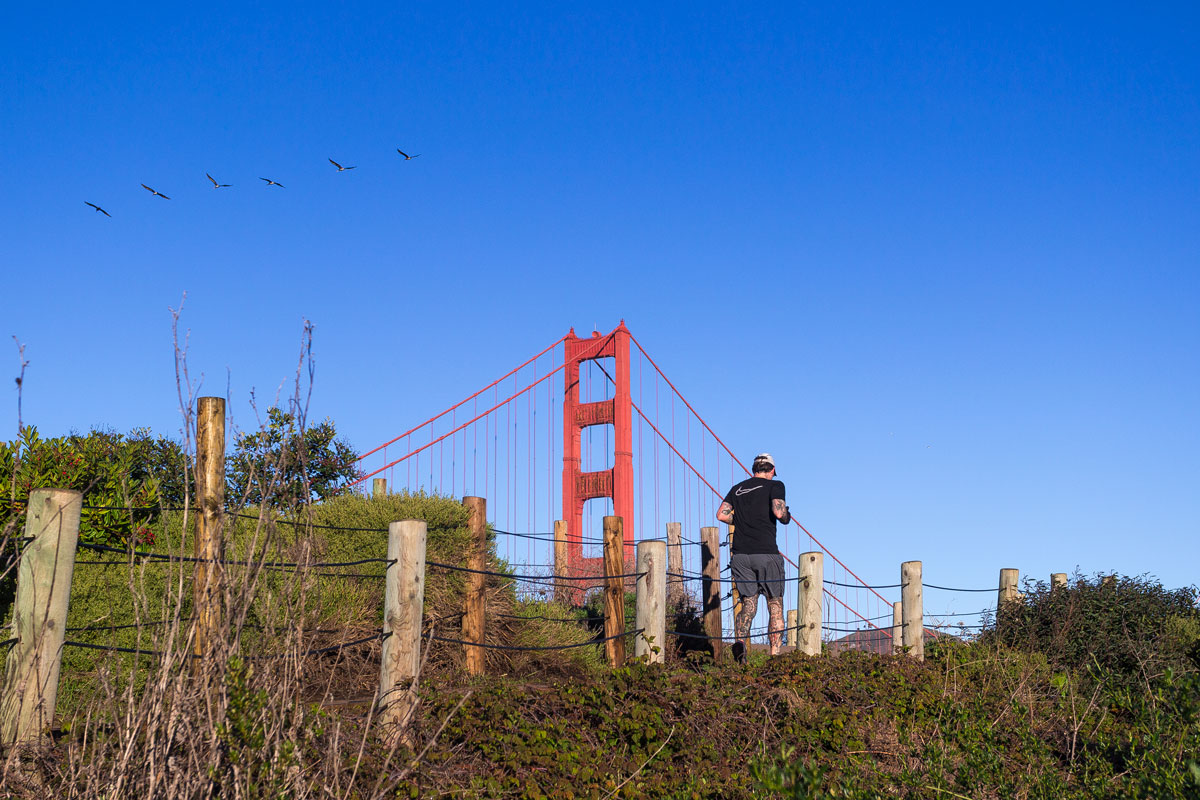
There is nothing better than running in the Presidio Park in the morning. If there were a bridge like that in Krasnogorsk, for example, across the Ban’ka River, I would be the world champion of morning running.
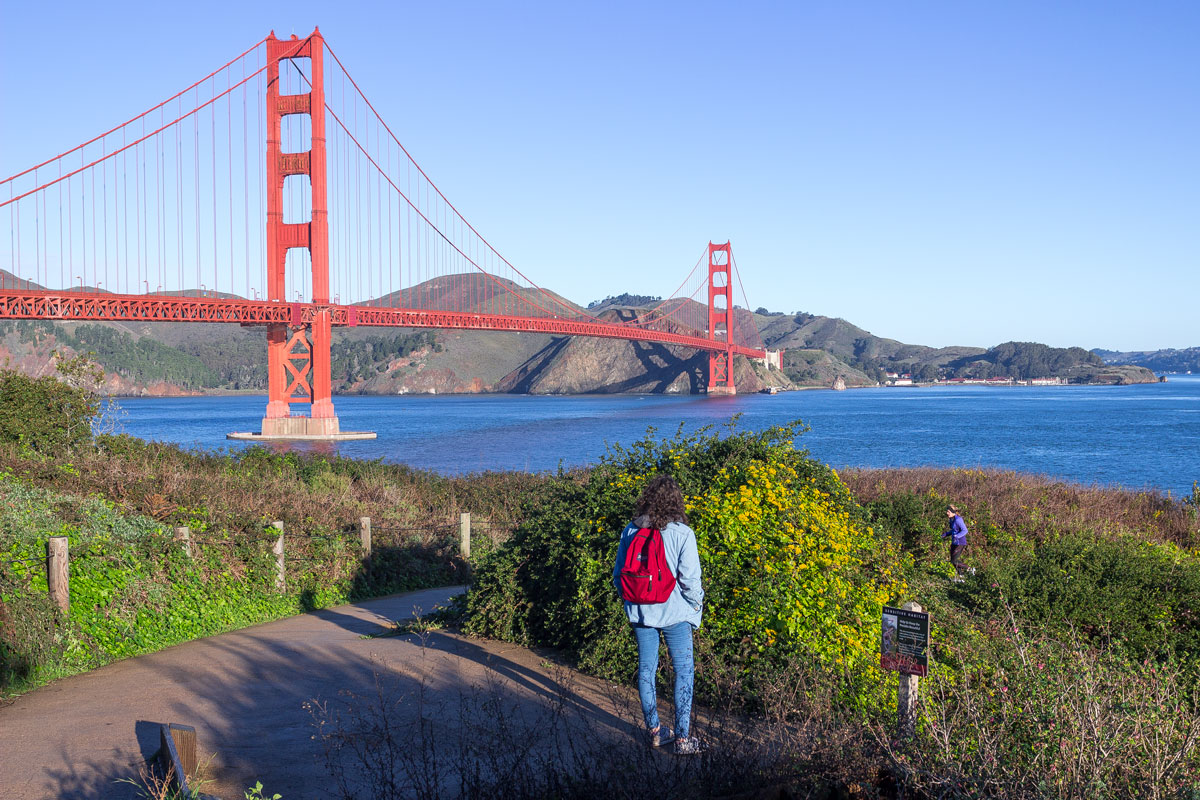
A place for a picnic.
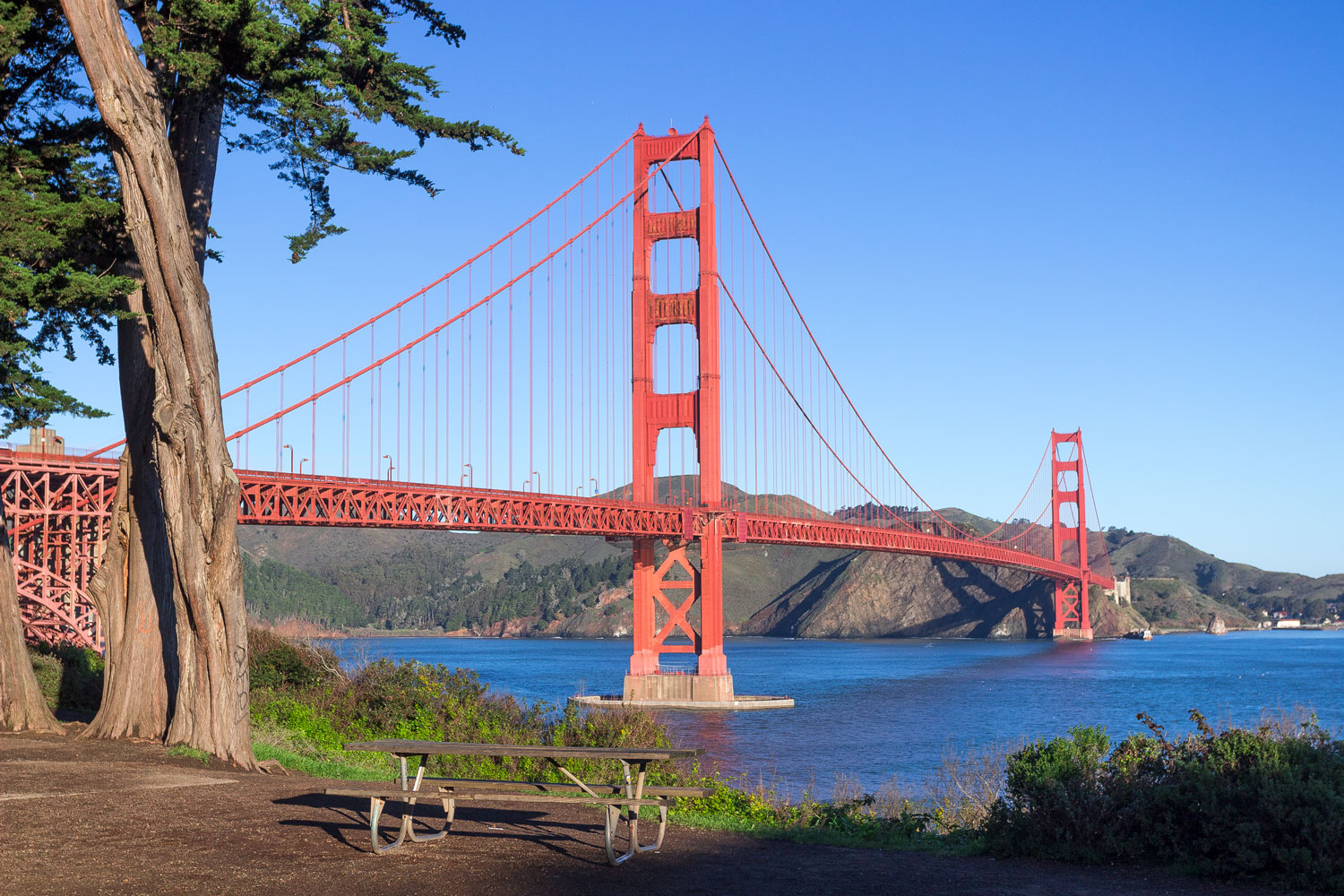
View of the fort and Golden Gate.
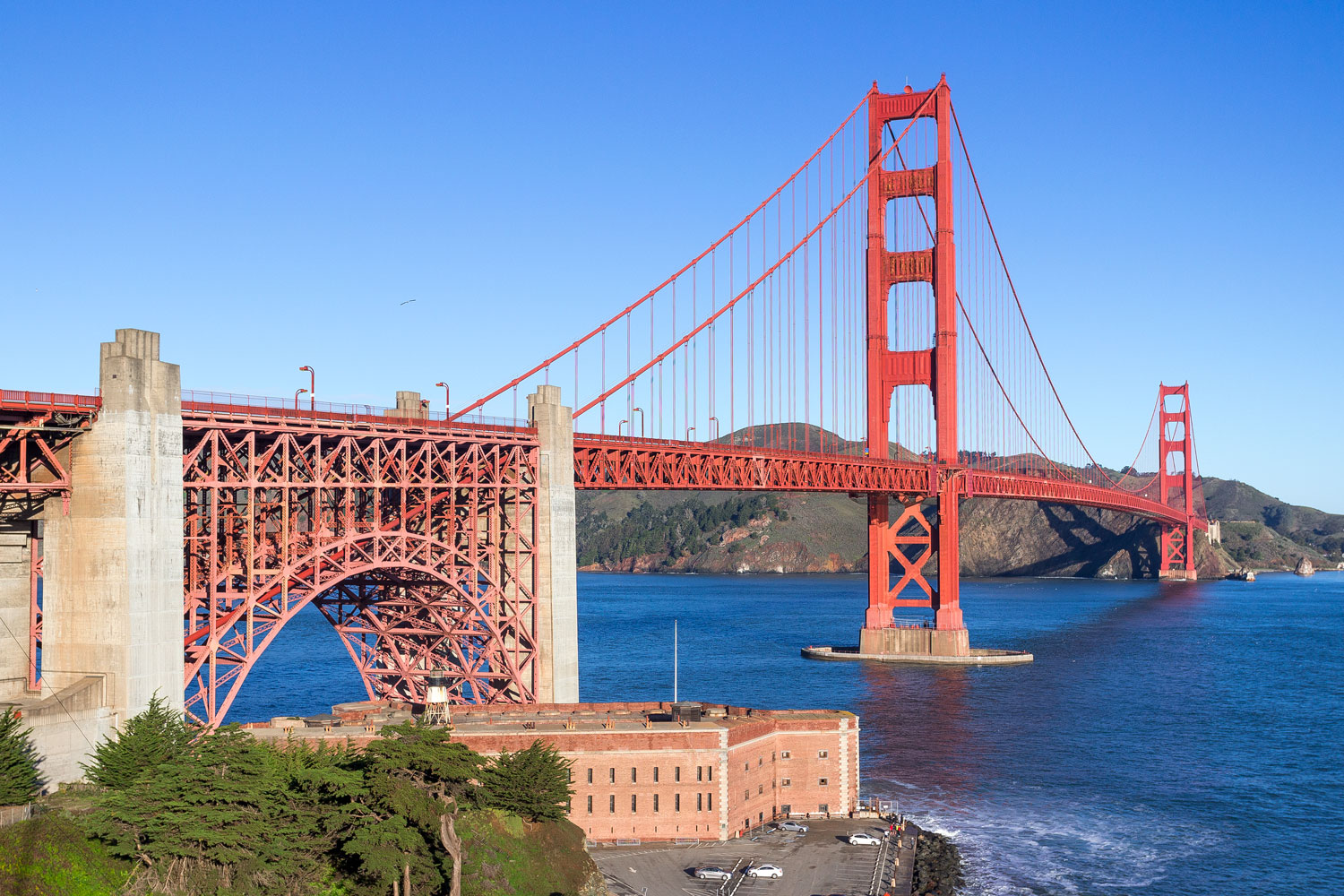
What’s amazing in the USA is the wooden electric poles. From what I could figure out, they’re not made of wood just for cost-saving reasons, but because wood is much more environmentally friendly than concrete in production. I’m not sure if that’s the reason. But even near the Golden Gate, there are poles like in the ghetto.
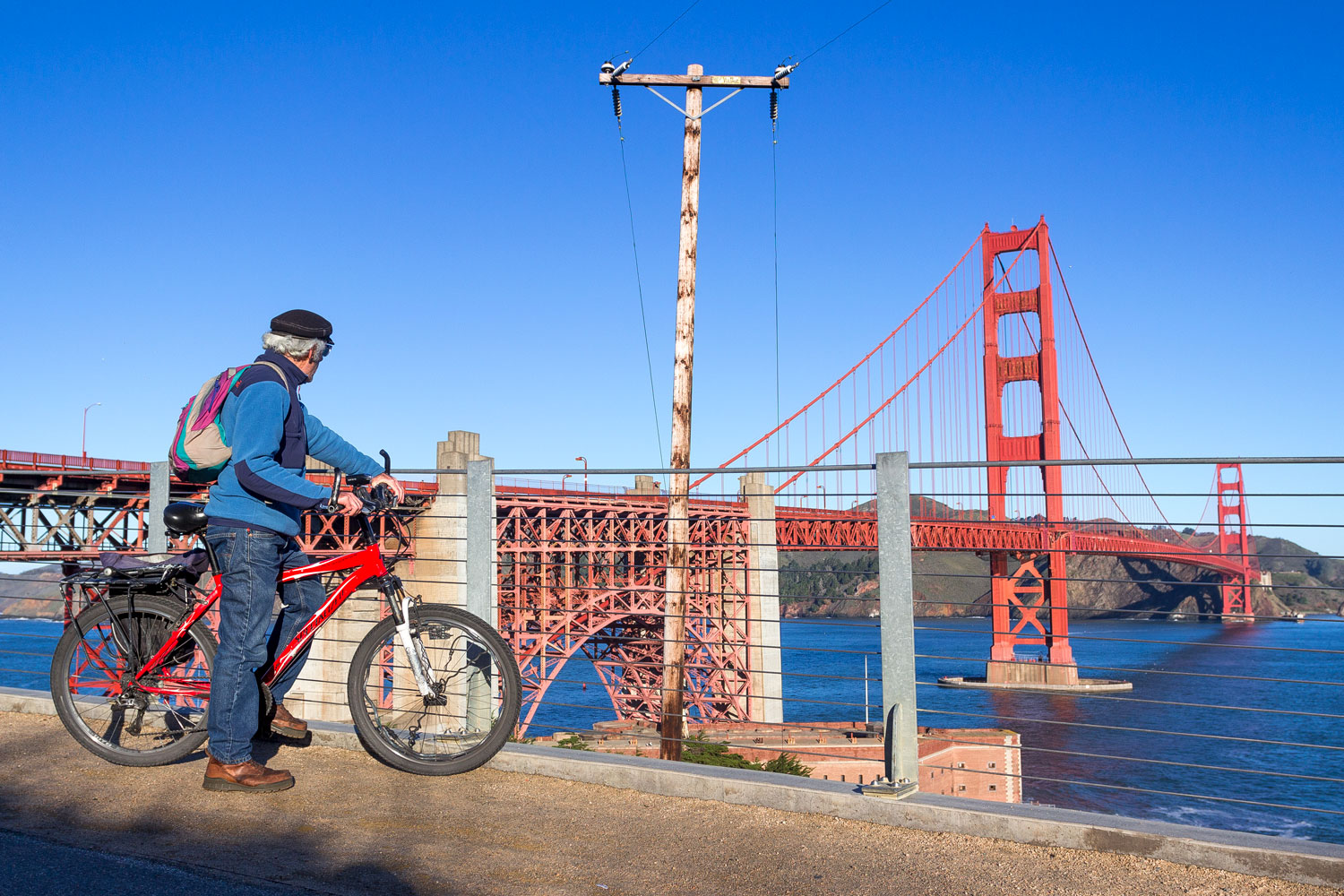
Samples of bridge elements.

You can walk under the bridge and come out on the other side. It’s still Presidio Park. If you continue along it, you can reach the Sea Cliff neighborhood I mentioned in the first part of the story about San Francisco.
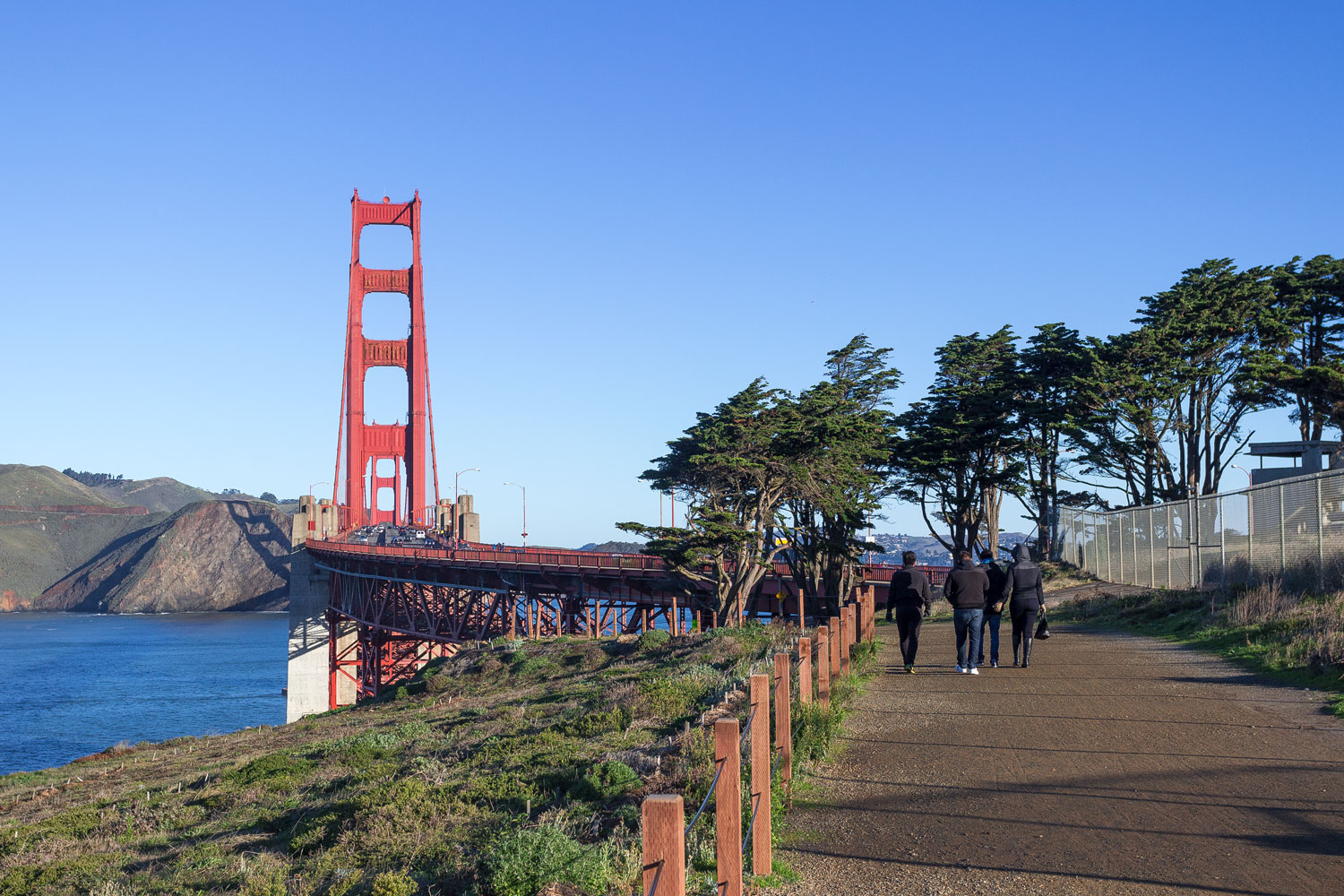
Breathtakingly stunning.
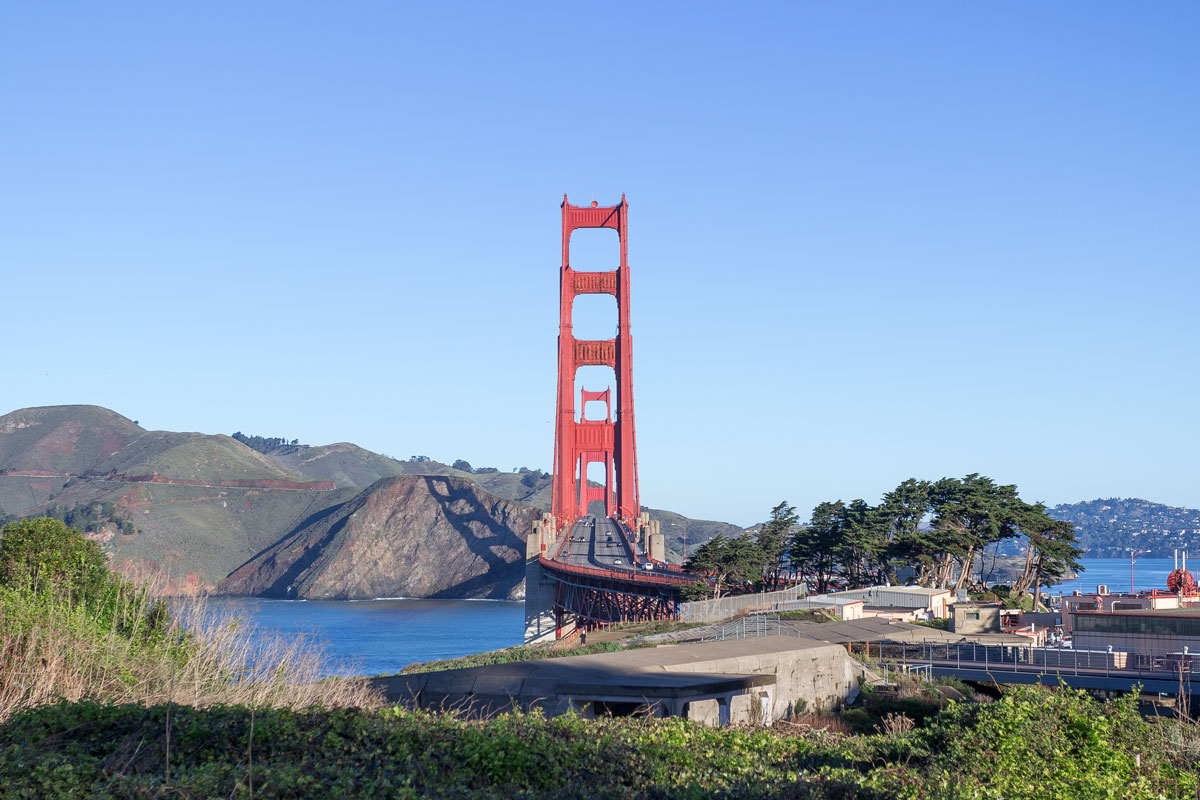
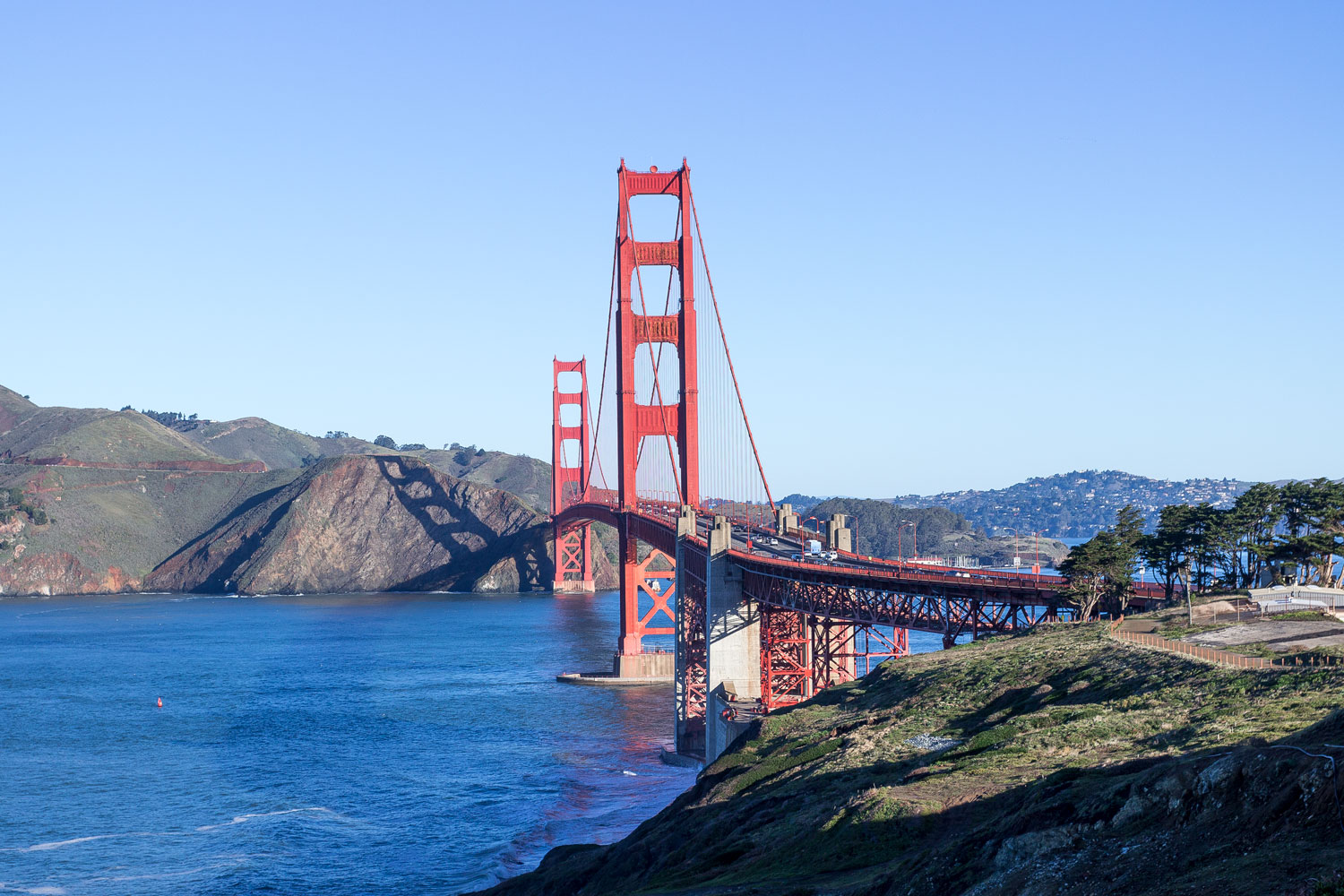
A lot of people walk here backwards. Because they walk and look back at the bridge.
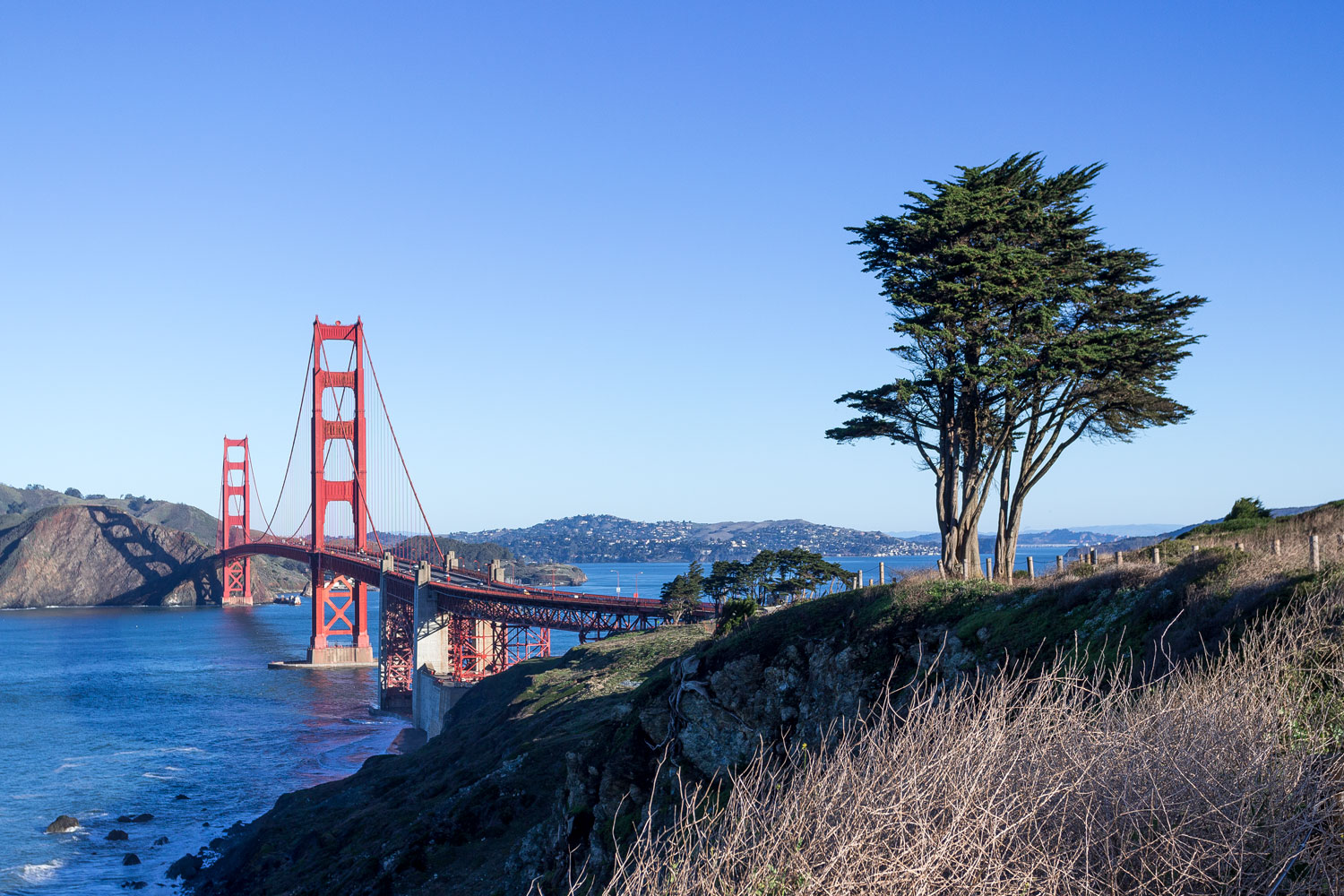
That’s how Golden Gate is visible from Sea Cliff.
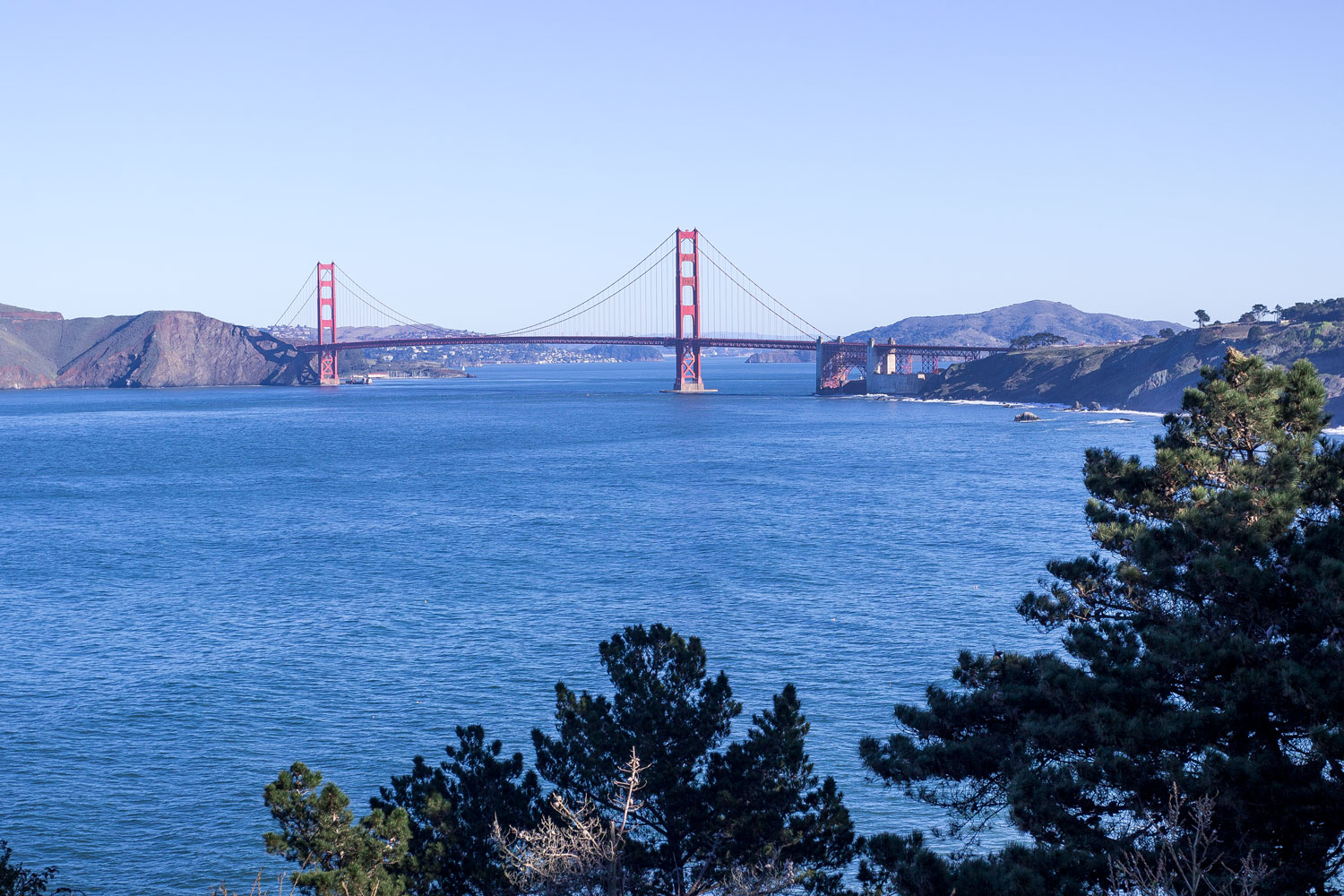
And this is how it looks from the other end of San Francisco, from Telegraph Hill.
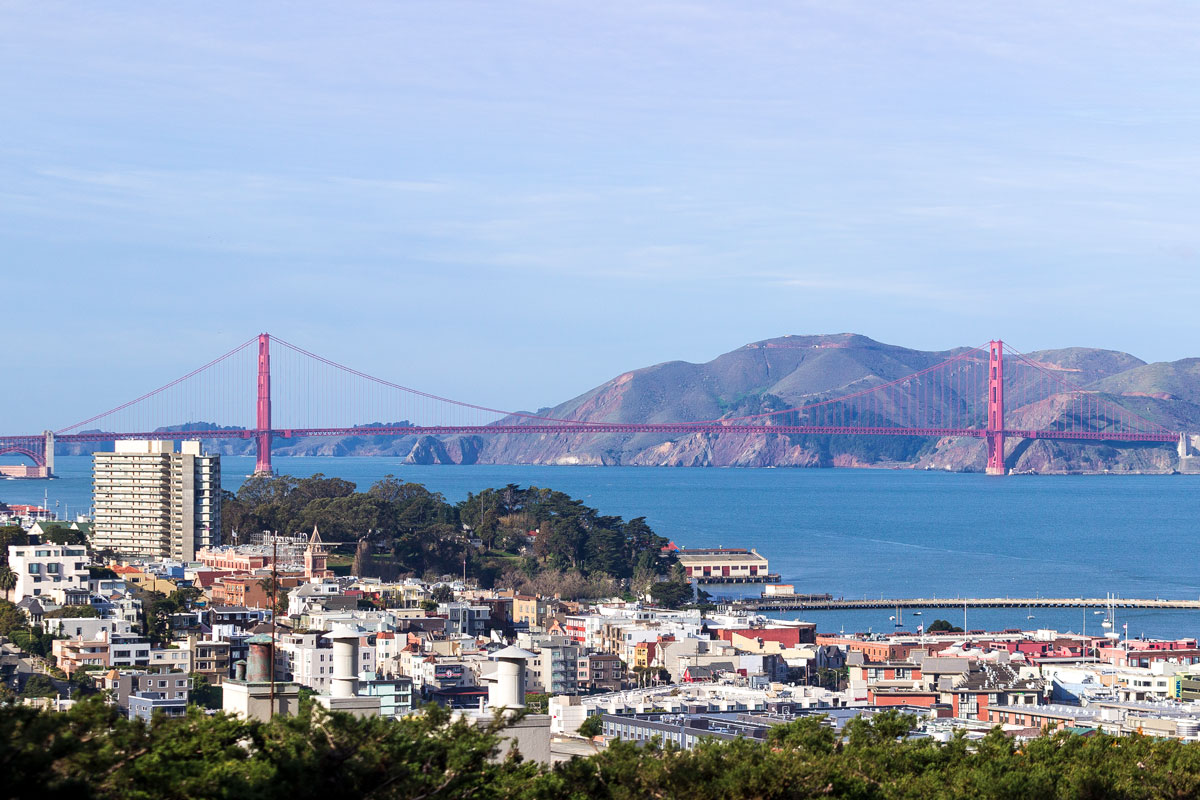
On the day of its opening, only pedestrians and cyclists were allowed to walk across Golden Gate. Cars were permitted to pass only on the following day. Within this short period, 200,000 people walked across the bridge.
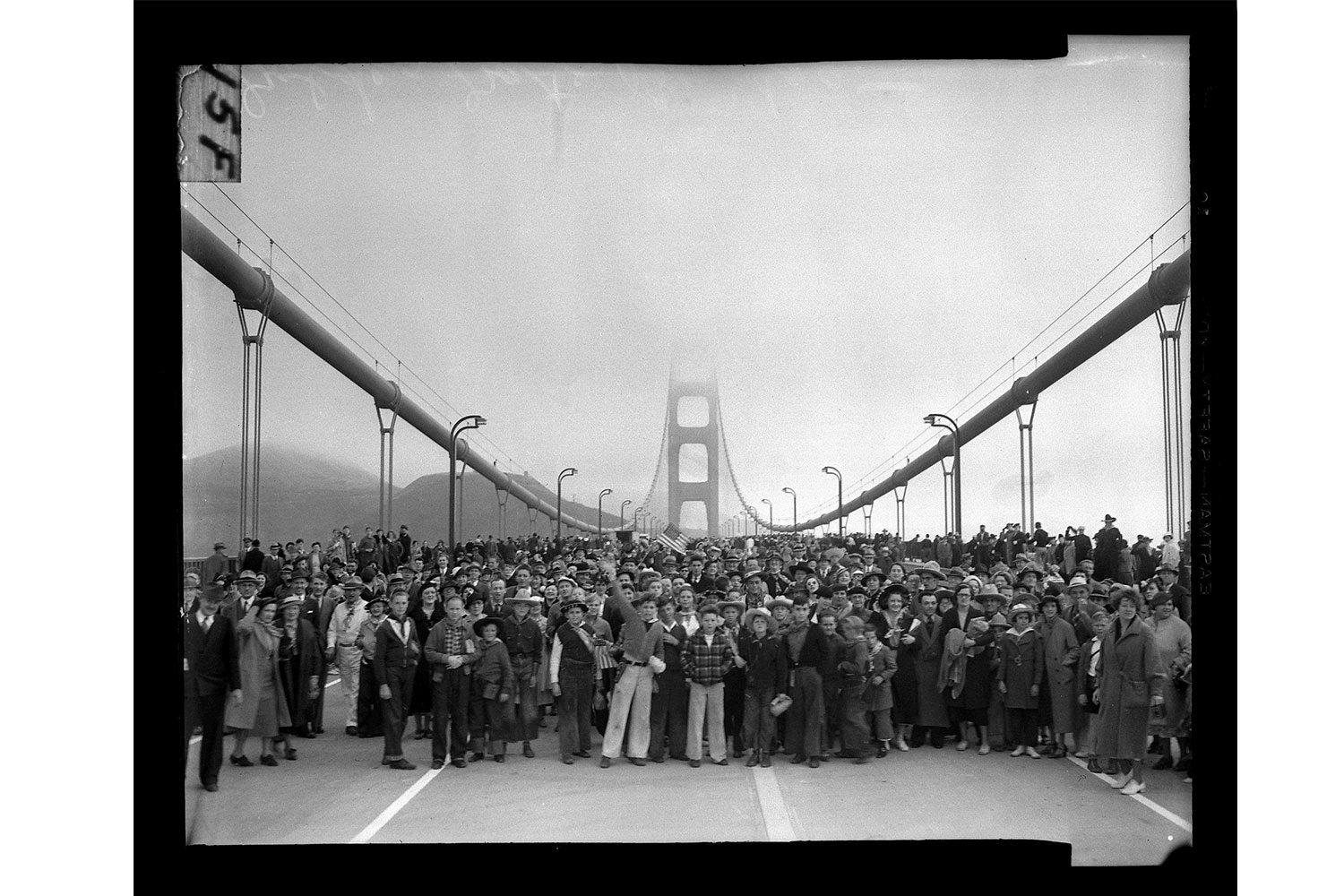
Alongside Golden Gate, there is not only a roadway; the bridge can be crossed by bicycle or on foot. This has been the case since the bridge’s opening. Only on the occasion of its 50th anniversary was automobile traffic closed for a day. On that day, countless crowds gathered on Golden Gate, approximately one million people.
For the first time—and not due to an earthquake or wind, but due to the enormous number of people—the Golden Gate Bridge even slightly bent under the weight. Since then, the bridge has never been closed again.
However, Golden Gate gradually began to attract individuals with suicidal tendencies.
Suicidal individuals have always had refined taste. Indeed, why hang oneself or cut one’s veins when you live in San Francisco? Taking a leap from the most beautiful bridge in the world, overlooking the sunset in California—it’s priceless!
By the way, the preference for suicide is no joke. Take a look, reader, at the infographic on suicides. There are significantly more jumps from the eastern side. Do you know why? San Francisco is visible from that side, while the western part of the bridge faces the ocean.
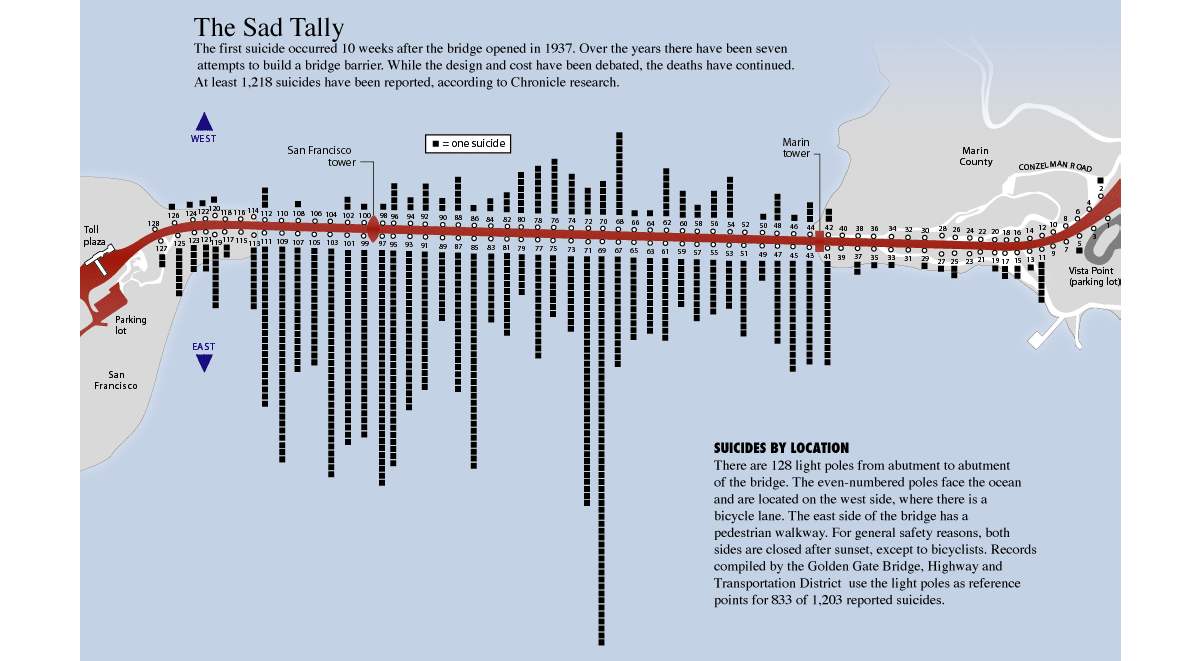
By the way, in just 80 years since the bridge was opened, around 1800 people have jumped from it. On average, that’s 22 people per year. So if the reader decides to plunge into the waters of the Bay, it’s purely for their own sake—others won’t appreciate it anymore. In terms of suicide, the Golden Gate has long become commonplace.
And on a serious note, at some point, the influx of individuals with suicidal tendencies became so strong that now the Golden Gate is only open to pedestrians during daylight hours. And only from the eastern side.
Along the bridge, you can find signs for suicide prevention: “There is hope. Call. Jumping from the bridge has fatal and tragic consequences.” Not long ago, emergency call buttons were also installed.

Quite recently, a protective net was installed along the bridge. I don’t know who would prevent someone from jumping onto it first and then into the ocean. Apparently, committing suicide in two stages is not as aesthetically pleasing.

⁂
Hmm.
And finally, the Golden Gate from the other side of the Bay. Against its backdrop, the entire San Francisco is visible. Plus, there’s no cell phone reception here.
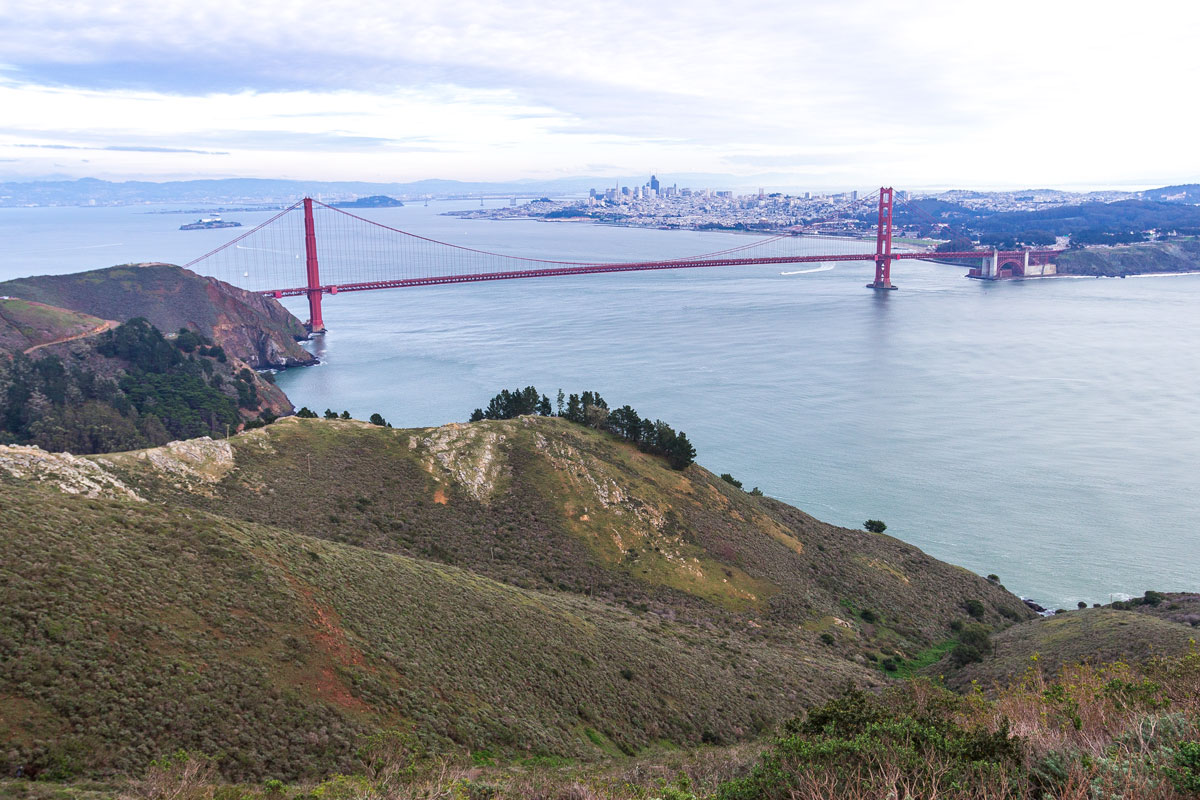

However, at night, the Golden Gate is not strongly illuminated. It’s all Photoshop and deception.

Come and see for yourself.
